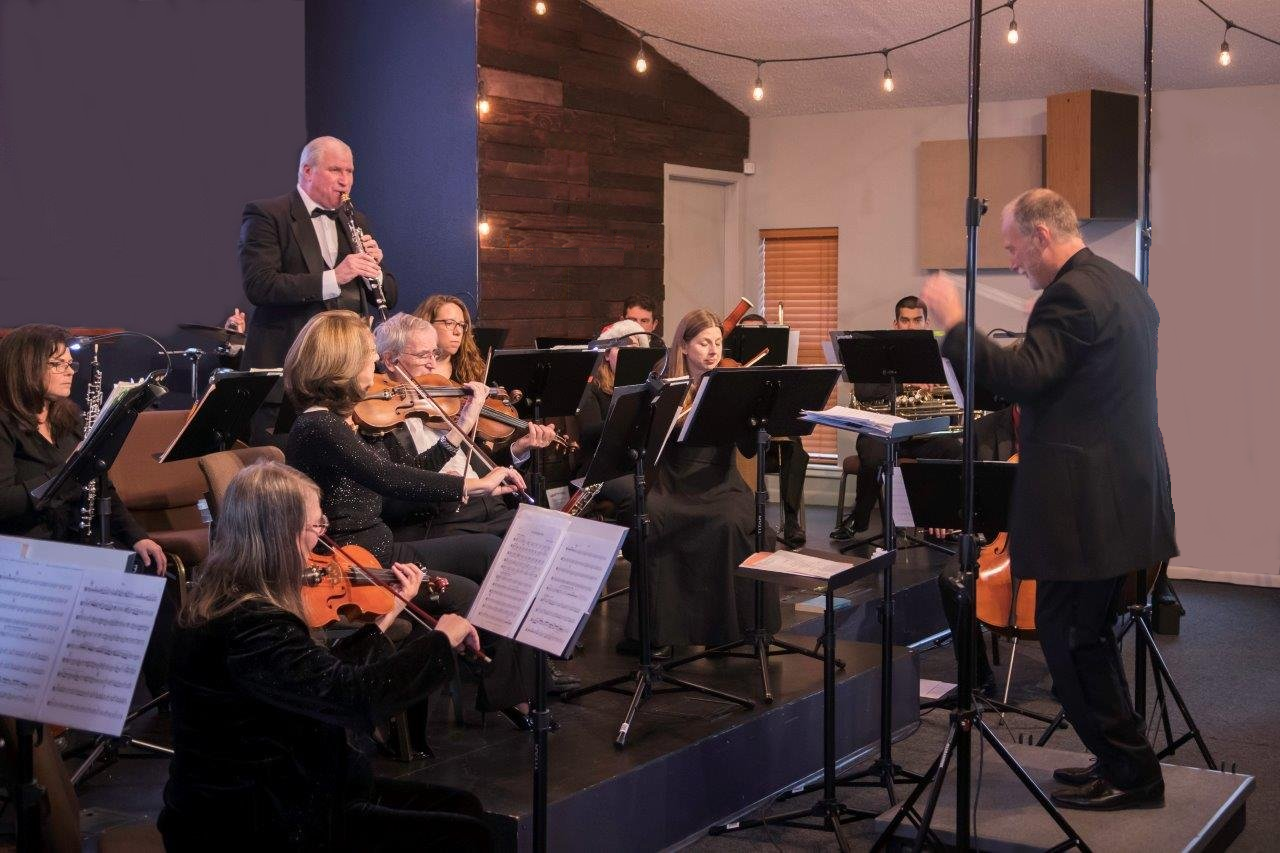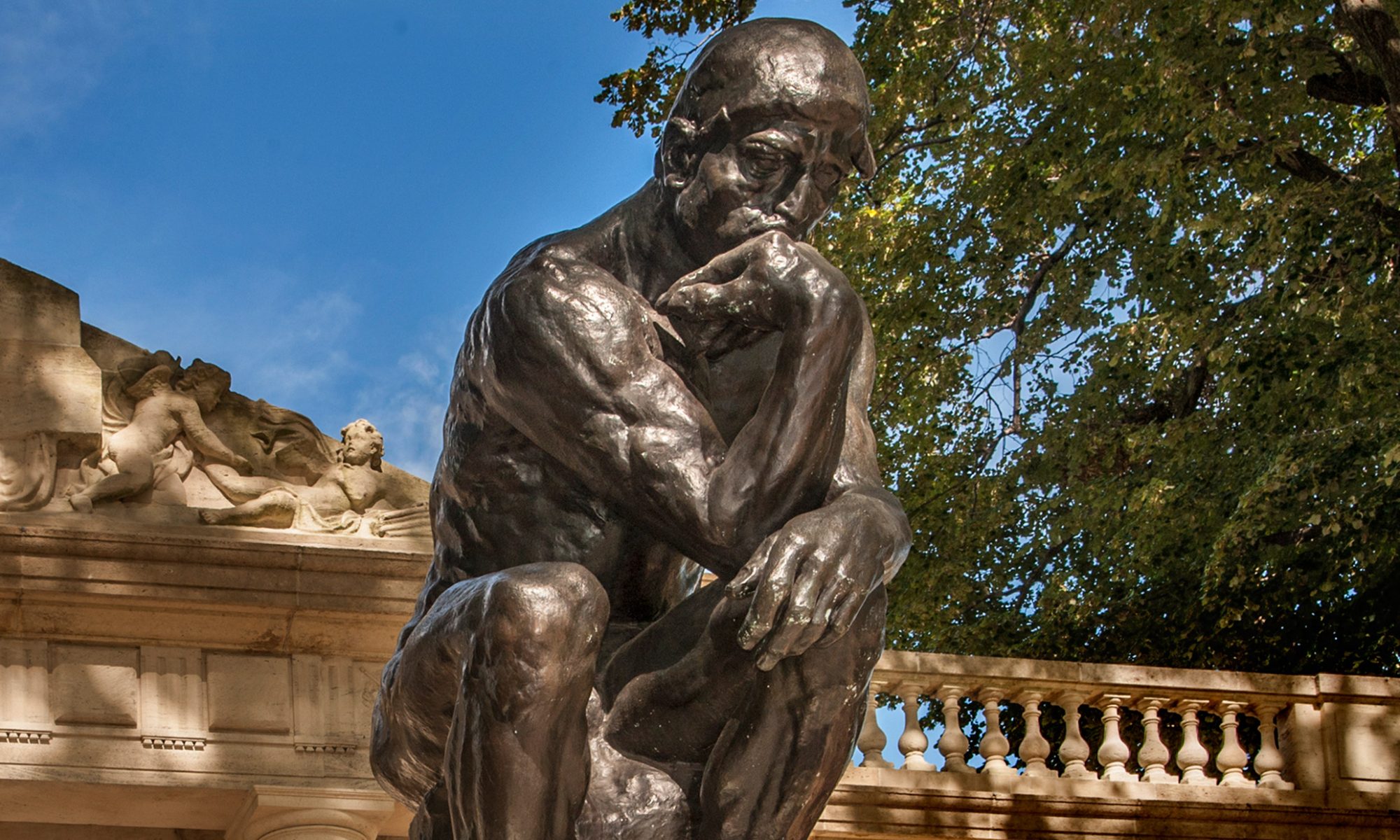Thoughts on Restructuring Classical Music: The Aesthetic and Ethical Implications of Altering Canonical Masterworks
The application of Extreme Transcription to classical music masterworks has sparked significant debate. While some argue that altering these compositions compromises their perfection and the composer’s original intentions, others assert that sharing the classical music canon in any form is justifiable if it moves audiences emotionally.
This debate raises both aesthetic and ethical questions: Should these works be preserved unchanged as monuments to their creators, or is reinterpretation a necessary step to ensure their relevance to contemporary audiences? The answers remain elusive, and the ultimate judgment may rest with time and the responses of listeners worldwide.
Below is a series of essays drawn from a multi-year research project on orchestral transcription that explore these issues in depth.
1. Introduction
2. Authenticity and Aesthetics in Transcription
3. How Technology Facilitates the Aesthetics of Transcription
4. The Ethics of Music Attribution
5. Works and Versions
6. Purism and the Ethics of Transcription
7. On Being Faithful
References
Footnotes
1. Introduction
While many forms of American music have arisen and developed, the classical music tradition brought over by European immigrants has remained relatively static. The vehicle primarily used for performing classical music – the symphony orchestra – remained fixed in size, instrumental configuration and repertoire.
This discussion advocates for several changes in the modus operandi for orchestras, detailed in the book Extreme Transcription Chapter 2: Extreme Transcription Techniques, which advocates and enumerates the techniques that I have developed to transcribe full symphonic works for use by chamber orchestras. It is Extreme Transcription which is the impetus for this section: an examination of the aesthetic, ethical, and relational issues associated with taking existing musical works and transcribing them for a different sized ensemble.
Transcribing orchestral works, or any music for that matter, is a fait accompli. Music has been transcribed or arranged into myriad forms across a variety of media. I draw a distinction between arranging, where works or tunes can be put in settings in an infinite number of ways, and transcribing, where the goal is to take a symphonic work and modify it so that it can be performed by a chamber orchestra in a manner that is as close to the original as possible.
One can go in the elevator and hear a melody from Tchaikovsky’s Nutcracker Suite (Op. 71a, 1892), and it will probably not be in the original orchestration. One might also hear an arrangement of a song by the Beatles, played by strings but still recognizable as a Beatles song. Even J.S. Bach “did not hesitate to make double use of originally secular works by adapting them to sacred texts, or to include movements from concertos and other instrumental compositions in his cantatas.” (David and Mendel 1966: 33) The repurposing of compositions by composers like Bach was and is not unusual. Tchaikovsky released his Nutcracker Ballet (Op. 71, 1892) and his Nutcracker Suite at the same time. What is unusual, and bears examination, is when third parties, such as me, take it upon themselves to transcribe an existing work and evoke a sameness making a difference
In other words, there are implications to making changes to classical music works through the techniques examined in the Extreme Transcription book. There would likely be fewer implications if one were merely arranging music from these works or just using their melodies, given that the goals and restrictions associated with arranging are usually different from those argued for here. I call for these works to be transcribed in their entirety for a smaller ensemble, and then presented as the same work in a chamber orchestra concert instead of the original symphony orchestra format. In other words, the transcribed version for chamber orchestra presents Strauss’s Salome’s Dance in concert as the same work, albeit with a caveat under the composer’s name: “Transcribed for Chamber Orchestra by Michael Drapkin,” for example.
But the two versions are not the same, and that also leads to two opposing standpoints. Some argue against changing something that is already perfect and was the composer’s intention when they composed the work, although we cannot be sure what that intention was. Others aver that the sharing of the classical music canon in any form is justifiable if it allows current and future audiences the ability to enjoy these works and hear them live in performance.
Tchaikovsky’s The Nutcracker Ballet provides a notable example of the difficulties that arise when making changes to a work, even when it is done by the original composer. His Nutcracker Suite allows eight of the numbers from the ballet score to be performed by a symphony orchestra in a concert setting and to be shared with greater audiences. However, in doing so, only one of the three waltzes that he composed for the ballet, the “Waltz of the Flowers,” is included in the suite, even though there are two more waltzes that – I would argue – are of equal stature to the single waltz that Tchaikovsky included in his suite. This means that The Nutcracker Suite audiences will not be able to listen to all of the music unless they go to a performance of the full ballet .
Given the cost of hiring an entire professional full symphony orchestra to perform The Nutcracker with a ballet company, one still runs the risk that the ballet company may use one of the many reduced versions of the ballet score, or even play back recorded music with no live orchestra at all. In both cases there is still music heard with the ballet performance, although it is possible the ballet company may also decide to make cuts to the music.
Each one of these versions result in an enormous number of changes to the original score, especially when you consider that the ballet score is 511 pages long. Therefore, with a nod to Gregory Bateson’s phrase “a difference that makes a difference” like a pebble hitting a flat pond surface causing it to ripple, in this case it is “a sameness that makes a difference.” (Bateson 1971: 231) The changed versions are still materializations of The Nutcracker, but also rendered into something different.
What is the right thing to do? Full ballet or suite, full orchestra or reduction, live performance or recorded music, and full score or score with cuts? In all of these permutations, the audience gets to enjoy Tchaikovsky’s music, but whether it is the “right thing to do” is still a gray area and that is the point of this chapter. It explores thoughts about the ethics and aesthetics of “the sameness making a difference” to classical music works from a number of different perspectives and viewpoints, in light of what others in the larger musical and philosophical community have had to say about aspects of this subject.
Authenticity and Aesthetics in Transcription explores the relationship between original and transcribed works: How do issues of aesthetics, authenticity and the nature of transcription fit into the understanding of that relationship? How Technology Facilitates the Aesthetics of Transcription looks at the ethical issues that arise when examining how technology has changed the processes by which music is produced. The Ethics of Music Attribution looks at the ethics of authorship that can occur when trying to understand the attribution of credit to those who contribute to a work. Works and Versions examines how to categorize musical works that are very similar, and whether a transcription is a version of the work on which it is based or whether it is the same work. Purism and the Ethics of Transcription examines the ethical issue of whether transcription should be done at all and compares this against historical practices. Finally, On Being Faithful examines whether canonical works can or should be transcribed and whether and how these transcribed versions should still remain faithful to the work on which they are based.
As mentioned above, transcription and arranging can take on many different forms, from the “sameness” sought in transcription, to a remix, where the original is changed or twisted by removing, adding or otherwise modifying parts of the composition. As a wind player, I started playing music that was originally written in other forms the minute I set foot in a concert band. When I was 13 years old, my first band concert had a medley of tunes that were written originally for jazz band and for Broadway shows. In high school, I performed a concert band transcription of the last movement (Allegro non troppo) of Symphony No. 5 by Dmitri Shostakovich (Op. 47, 1937), “Elsa’s Procession to the Cathedral” from Act 2, Scene 4 of the opera Lohengrin by Richard Wagner (WWV 75, 1850) and many other works. The first tune I recall in my beginning clarinet method book started with an arrangement of the German folk song “Hänschen Klein” – Lightly Row. When I attended the Eastman School of Music and played in the Eastman Wind Ensemble, we performed a band transcription of Ottorino Respighi’s bombastic orchestral piece Feste Romaine (P 157, 1928). Certainly, as wind players, we have been surrounded by transcriptions and arrangements from the earliest formative moments of our musical experiences and that has been the norm. Hence, I have not thought twice about the idea of transcribing a work, unless there were copyright issues involved.
We are so buffeted by multiple kinds of media in today’s society that we are inured as to its original source or format. You could be walking down the street and hear music playing in a store, or during an advertisement on television, or something on the computer, tablet, phone or web browser. I often watch a show on TV and recognize an excerpt from Mozart’s Clarinet Quintet (K 581, 1789) – a work I have performed numerous times – or a cantankerous piece by Sergei Prokofiev, depending on the setting and/or mood that the film composer wants to elicit (or to avoid having to pay licensing fees if the piece is in the public domain). Therefore, this chapter will not concern itself with whether this practice exists – it is ubiquitous – but rather with what it means and how it fits into our understanding of the practice of transcription as advocated here and demonstrated on this website.
Provided here is an attempt at a justification for the transcribing done of symphonic works to chamber orchestra as part of the argument that the focus in America on professional symphony orchestras needs to shift to the use of professional chamber orchestras in specific communities. Philosopher Lydia Goehr’s first book, The Imaginary Museum of Musical Works, which was published in 1992, goes into the idea of musical works, and the historical, philosophical, and musical questions that define them. This tracks closely to many of the questions that I address in examining the ethics and aesthetics of transcription, hence I often will quote Goehr in this chapter. She pointed out that in Weber’s time “…composers believed that they should be able to live and function as free individuals, and that their productive activities should, if they should be subject to anything at all, be subject to the forces of an urban market for music.” (Goehr 2002: 207) Transcribing symphonic music from the classical music canon for chamber orchestra also reflects what the markets for this music dictate. However, it also opens up questions of ethics and aesthetics with respect to transcribing canonical orchestral works.
Musicologist and philosopher Peter Kivy’s 1995 book Authenticities describes and reflects on four different manifestations of authenticity in musical performance. The first, “The Authority of Intention,” examines composers’ intentions, and performers following or not following what they believe that to be. The second, “The Authority of Sound,” looks at sonic authenticity with respect to what might be the composers’ intention for what a work should sound like when performed and the issue of what is sensible given the time, instruments, and performance practices of the day. The third, “The Authority of Practice,” looks at how the concept of aesthetics changed with the invention of the modern concert hall, which focused the listener on the details of the performed work, particularly since prior to circa 1800, music was performed not as the center of listener attention, but alongside other activities that were taking place socially.
It is the last one, “The Other Authority” (personal authenticity), that bears careful examination in the context of transcribing works from the classical music canon. The act of transcribing entire works by Berlioz, Rimsky-Korsakov and Strauss weighed heavily upon me when I chose to create new versions of those same works for chamber orchestra, as pointed out above. I would go as far as suggesting that Kivy’s authenticities need a fifth one, “The Authenticity of Transcription,” which will be examined later in this chapter. I grappled with a number of soul searching questions before I began the transcription process: Do I have the requisite skills to create excellence in my transcribed works? Did I pick works that are conducive to being transcribed, or am I setting myself up for failure? Do I believe that I can imbue my transcribed works with what I believe to be the compositional and aesthetic essences of what these great masters of composition created many years ago, some of which to me border on magic? How will others judge what I create?
Kivy applies the concept of personal authenticity to how performing artists interpret or bring out the expressive qualities of a musical work. This is no different than how I as a performer may personally interpret and create a musical performance. That same professional and personal performing ethic was applied to the transcription process, so the questions that I ask myself about transcribing in the previous paragraph are very similar to those I invariably have when I choose to learn and perform a challenging work of music as a performer. When I create a transcription, I am not necessarily a performing artist but still applying the same desire: if I were to perform the principal clarinet part to Capriccio Espagnol, which features clarinet solos and even a cadenza, I’d want to do justice – technically, artistically and expressively – to Rimsky-Korsakov’s work. Similarly, when I transcribe it, I want to do the same thing. However, when I transcribe works, the pressure to do justice is magnified manyfold since I take it upon myself – as the transcriber – to interpret the original composer’s entire composition and orchestration – not just the clarinet part. When transcribing, the goal is to create something that not only technically recreates what I believe comprises the original composition in a chamber orchestra setting, but that also maintains the same opportunities for the performing artists to express themselves as they would in the original orchestration: authenticity as transcriber.
Both, to me, are instances of Damocles sword being held over one’s head: the performing artist is judged by the personal authenticity of their performance, and I am judged by my ability to be personally authentic in my transcribed works, and both are judged when the transcribed music is performed, even though I may have written my score months, years or even decades before. Therefore, this heady responsibility is not taken at all lightly. I experience the same “butterflies” or performance anticipation before I perform a solo as I do when I open the original score of a work that I want to transcribe. When my transcribed works were being recorded in Ostrava, I also experienced the same butterflies on the floor of the recording studio before the first note of my transcribed works were played by the orchestra, and I had the same feeling of relief when it was over. In conclusion, the book Extreme Transcription” outlines the “how,” and these essays explore the “why.”
2. Authenticity and Aesthetics in Transcription
When I was living in New York City, I had a friend working on her master’s degree in fine arts from Columbia University – a painter. One day she asked me if music performers were artists, since they don’t create the music but merely recreate what the composer has created. Therefore, according to her, performers weren’t artists. This caught me by surprise, and I have mused over that conversation since then. I responded that when it comes to the performing arts, the composer and their work don’t exist without the performer in the same way as a performer doesn’t exist without something to perform. Plus, it is the performer that takes what the composer has written on the page, interprets it, and communicates it to the audience. Without the performance and the performer, what the composer writes is just paper with symbols on it.
Wynton Marsalis said almost the same thing as my painter friend, just from his perspective: “Concert musicians are artisans – jazz musicians are artists. . . . With Bach or Haydn, you know what you’re playing is worth hearing, and the best thing you can do is not mess it up. In jazz, you have to have something worth saying and then know how to say it” (Buschel 1987). This is a bit chauvinistic from a genre standpoint, but it does reinforce my friend’s question about what constitutes an artist, and these issues will both be addressed below.
In his book Art Worlds, published in 1982, sociologist Howard S. Becker looks at the relationships between musicians, dealers, critics, suppliers, and consumers, as well as the artist, that converge to create a work of art. Becker applies these relationships to the symphony orchestra:
For a symphony orchestra to give a concert, for instance, instruments must have been invented, manufactured, and maintained, a notation must have been devised and music composed using that notation, people must have learned to play the notated notes on the instruments, times and places for rehearsal must have been provided, ads for the concert must have been placed, publicity must have been arranged and tickets sold, and an audience capable of listening to and in some way understanding and responding to the performance must have been recruited. (Becker 1982: 2)
Becker’s description is a good inventory of the human and nonhuman components needed to stage a symphony orchestra concert. However, it does not include the personal aesthetic that one expects when attending a concert. The attendees are not there to hear a reproduction by artisans, as Marsalis puts it, otherwise they could just download a recording from iTunes. To me, being a performer is much more than just mechanically reproducing something on a printed page. Performers are not just expected to have the technical facility needed in order to accurately play what is on their sheet music (and this includes the ability to play the notes, articulation and dynamic range). It also includes producing a good tonal quality, the ability to follow or create their own dynamics, tempo, and stylistic interpretations, whether explicitly written by the composer in the music or not. They decide what indicators such as espressivo, sehr langsam, sotto voce, or marcato mean, as well as how to follow the conductor, if there is one, and how to blend and collaborate with other members of the ensemble.
Performers are both expected and judged by how well they interpret what they see on the page, and what may not be indicated, including a myriad of interpretive factors usually referred to as “expression” that will vary from one performer to another and ultimately give them the ability to evoke an emotional response to their playing in the listening audience, their fellow musicians, and themselves. Similarly, the act of transcribing is not just one of applying rules and the mechanical reproduction of a score. It involves applying one’s sense of aesthetics in order to create something that reflects the beauty and emotional impact of the score on which it is based.
As mentioned in the introduction to this chapter, Kivy sums up the idea of what he calls a personal authenticity as “bearing the special stamp of personality that marks it out…the unique product of a unique individual…they are particularly valued for having: the qualities of personal style and originality” (Kivy 1995: 123). While I agree with these characteristics, when it comes to symphony orchestras, that description mostly applies to conductors and soloists, and not so much to the orchestra musicians themselves – even the principal players. In an essay I published called “The Rise of the Industrial Clarinetist,” I railed against the idea of orchestra musicians having any personal authenticity (or rare instances of it) (Drapkin 2013). In today’s orchestras that operate under a union contract, musicians are no longer selected directly by the conductor as they were at one time but filtered by a committee of other orchestra musicians. I theorized that this method led to the selection of bland musicians because if you play with too much personal authenticity, then some committee members or the conductor will not like it and not vote for you, and you won’t get hired.
Kivy devotes an entire chapter in his book Authenticities to the issue of personal authenticity to musical works. He concludes that “the artistic skill of performers, when they are exhibiting personal authenticity, is more like the compositional skill of arranging than like any other thing that I can think of: that performances, when they exhibit style and originality, are more like versions of musical works” (Kivy 1995: 135). I fully agree that arrangements, or more specifically transcribing – the term I use throughout this discussion – can be considered as versions of the notated score. Kivy shifts from performer to arranger by saying that, “the arranger must have an idea of how the work goes in order to make a credible version of it. He or she must, in other words, have an interpretation, be an interpreter. And that gives us just the result we were seeking for performance” (Kivy 1995: 137). Philosopher Susanne Langer describes the musical performer as the composer’s “confidant and his mouthpiece.” In deference to my painter friend, a classical performer is still limited to the notes that are given to them on the page, while transcribing can be done in an infinite number of ways (Langer 1978: 215). By its very definition – transcribing – the notes are going to change, and this is where the role of personal authenticity comes in.
Therefore, the goal that I seek with my transcribed works is to “have an idea of how the work goes in order to make a credible version of it” (Kivy 1995: 139). Where the goal of a performer “is to leave the indelible mark of personal style and (one hopes) personal originality” (Kivy 1995: 139), my goal is to transcribe the work and capture a credible version of it in the format I chose, using my intersubjective sense of aesthetics in transcription. I seek to capture a credible but new version of the original score, although how I do it will likely be different from how other people may transcribe a work. Here is an example again using the Nutcracker:
During the week of December 4, 2022, I performed in the pit for Tchaikovsky’s Nutcracker Ballet with the Venice Symphony in Florida using a version of the ballet score that was “orchestrated, edited, and arranged for the smaller orchestra” by John M. DeVries. It was selected because the Venice Symphony could not afford to pay for the full symphony orchestra instrumentation indicated in Tchaikovsky’s ballet score nor could the orchestra pit hold that number of musicians. This was performed with the following instrumentation:
4 – Violin 1
3 – Violin 2
2 – Viola
2 – Cello
1 – Bass
1 – Flute/Piccolo
1 – Oboe/English Horn
1 – Eb/Bb/A Clarinet (there is no Eb clarinet in the original score)
1 – Bb/A/Bass Clarinet (me)
1 – Bassoon
2 – Trumpet
2 – Horn
1 – Bass Trombone
1 – Timpani
1 – Percussion
1 – Harp
1 – Celeste/Synthesizer (for chorus)
26 musicians total, plus the orchestra was miked and amplified.
DeVries’ website touts that in his version “all important solos are scored for the original instrument” and “care is taken to preserve color and texture of the original composition” (DeVries 2012). This may have been DeVries’ intention, but the overwhelming opinion of many in the orchestra was quite negative to the point that after the performances both the Artistic Director and the Vice President of Artistic Operations approached me, asking me to create my version of the transcribed ballet. The issue of authenticity and aesthetics in transcribing a work takes on significant importance.
My book Extreme Transcription is devoted to the techniques, best practices, and principles that I derived and enumerated through the works that I transcribed. While transcribing can appear to be a sterile process or a set of rules, it is still a collection of aesthetic decisions that one makes. As seen in the previous paragraph, the ethereal and aesthetic nature of music remains a critical issue to the process of transcription, even though it is quite difficult to characterize, as pointed out by musicologist Daniel Chua and philosopher Lydia Goehr below.
Though speaking specifically about the fraught notion of “absolute music,” Chua’s work is situated at the intersection between music, philosophy and theology. He opines on the nature of absolute music in his book Absolute Music and the Construction of Meaning. Chua’s observations are equally relevant more broadly to this notion of what is or isn’t music:
What is this essence that so powerfully discriminates between what is and is not Music? There is no answer; or, at least, when asked to disclose the criteria for musical purity, absolute music deliberately draws a blank. Its signs signify nothing. Indeed, it cleverly champions this nothingness as its purity. The sign and referent cancel each other out in such a frictionless economy of exchange that no concept or object is left over. Thus, the meaning of absolute music resides in the fact that it has no meaning; the inchoate and the ineffable become synonymous. (Chua 1999: 4)
Goehr says something similar:
Musical works enjoy a very obscure mode of existence; they are ‘ontological mutants.’ Works cannot, in any straightforward sense, be physical, mental, or ideal objects. They do not exist as concrete, physical objects; they do not exist as private ideas existing in the mind of a composer, a performer, or a listener; neither do they exist in the eternally existing world of ideal, uncreated forms. They are not identical, furthermore, to any one of their performances. Performances take place in real time; their parts succeed one another. The temporal dimension of works is different; their parts exist simultaneously. Neither are works identical to their scores. There are properties of the former, say, expressive properties, which are not attributable to the latter. And if all copies of the score of a Beethoven Symphony are destroyed, the symphony itself does not thereby cease to exist, or so it has been argued. (Goehr 2002: 3)
I grappled with this issue of the nature and essence of music in what it meant to transcribe a musical work. In the case of the winds, brass, and percussion, I made the decision to cut down on the number of players in order to change these works from symphony size and accommodate the size of chamber orchestras while still including their instrumental timbres. For example, in the case of Berlioz’s Symphonie Fantastique, I made the decision to change the number of bassoonists from four to one, as I believed that I could retain the voice and timbre of the bassoon using just one player. Much of my transcription activities concerned these changes in headcount and my ability to retain what I considered to be the aesthetic nature of the original. These posed significant transcription challenges and I laid out how I responded to them in Extreme Transcription.
The string parts in my transcriptions require special examination given that the notes are largely left unchanged from the original. This begs the question of what the nature of transcription is in the case of the strings. The difference is (of course) in the number of string players in the orchestra. In a full symphony orchestra, there may be sixteen first violins, while in my transcribed chamber orchestra version there are four first violins, although the conductor may decide to change the number of string players.
The difference between the transcription of the bassoon and the string parts is that it partly takes place outside the actual score, as can be seen in the two score examples and audio clips below. The cut in the strings doesn’t take place in the score; it takes place by specifying that the work is intended to be performed by chamber orchestra and not for symphony orchestra, which explicitly means less string players on each part.
Here is the original string opening in the first movement of Berlioz: Symphonie Fantastique:

Figure 102: Berlioz: Symphonie Fantastique Movement 1 Original Score. Bärenreiter -Verlag edition.
Audio: Figure 102 – Original work (Chicago Symphony) xb5.com/f144
Here is my transcribed string opening. It looks virtually identical to the original – but it is not. The score above calls for fifteen first violins, and in the recording below it is with four first violins (although since I left the amount of violins deliberately open, it could have been performed with 5, 6 or 2 violins as well). While the score may look identical, the difference in the number of violinists is significant. By definition, four first violins identifies this as a chamber orchestra, while fifteen first violinists identify it as a full symphony orchestra. Therefore, a big part of how the transcribed version can (or should) be performed cannot be seen in the notes of the score at all.
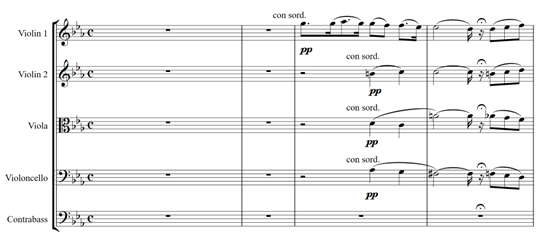
Figure 103: Transcribed Berlioz: Symphonie Fantastique Movement 1
Audio: Figure 103 (Janáček Philharmonic Ostrava) xb5.com/f145
The basis for my personal authenticity in what constitutes the size and balance of the chamber orchestra is a result of the previous thinking I had done when cofounding the Texas Chamber Symphony in 2019. I argue that, from an aesthetic point of view, the orchestra can be limited to 22 musicians, including 4 violins (Violin 1 and 2), 2 violas, 2 celli and 1 contrabass. My goal was to have the smallest orchestra possible in order to make it cost effective since it was a brand new organization with very limited funding that we were trying to get started. But it was still paramount to me that it retain my ideas regarding aesthetics, balance, and timbre of the transcribed product. The instrumentation I used for Rimsky-Korsakov’s Capriccio Espagnol, which was the first work that I transcribed for chamber orchestra, is broken down by instrument: 23 players. Aesthetically I needed to add a harp, although my early draft of the score did not include it. Hence the orchestra size was increased to 23 players from my original 22. The last work I transcribed was Strauss’s Salome’s Dance. Here, I included a celeste on the basis of my aesthetic intuition; that increased the orchestra size to 24 players.
A big issue driving the number of strings is the balance between the winds and the strings, how the ratio of strings to winds changed over time, and how it relates to my aesthetics of transcription for chamber orchestra. While Chua and Goehr speak in general terms about the ontology of music, technical issues like the ratio of strings to winds and their effect on the balance and timbre of the orchestra is but one of the topics that comprise the aesthetics of transcription, or more specifically, my personal transcription aesthetic. These are the granular techniques that I specifically developed for the transcription process, the specific essential and practical implementation of aesthetic, ethical, cultural, and historically informed decisions that I necessarily have to make.
Regarding the historical sources that affect my transcription work, as Elliott Galkin points out in A History of Orchestral Conducting: In Theory and Practice, which includes Quantz’s observations on string ratios:
Quantz’s figures are significant: the proportions among the strings described in his smallest orchestra (4:1:1:1) [violin:viola:cello:bass] are the same as those which define their distribution in modern symphonic ensembles. We may infer from his instructions that as eighteenth-century groups increased in size, characteristics of instrumental balance were modified: emphasis was placed on the outer voices reinforced by the addition of woodwinds, the oboes doubling the upper parts and the bassoons the bass. Such polarity typified the Baroque Klangideal, and permitted the audibility of the keyboard instrument’s harmonic and rhythmic participation. This large proportion of woodwinds to strings is impressive. Recognizing Quantz’s specification of eleven woodwinds to twenty-one strings as reflecting the basic concept of orchestral sonority in the middle eighteenth century, we realize how dramatically instrumental balance has been modified during the past two hundred years: today the proportion of woodwinds to strings is one to eight, distributed throughout the entire tessitura of the orchestra. (Galkin 1989: 26)
Galkin’s observations regarding instrumental proportions exposes an underlying mechanism that drives the balance between winds and strings when it comes to reducing the number of players. This runs the risk of two things happening. First, the winds can end up overbalancing the strings to the point that the strings cannot be heard, especially when they have melody, and the loss of string timbre by using less players. This is the “audibility” mentioned in the above quote. The second issue is a difficult one that needs to be balanced delicately: what kind of string sound or orchestra sound do I want or am I willing to have based on the number of players? My intention in transcribing canonical works is for the timbres across the “tessitura of the orchestra” to be as familiar as possible, that is, as close as possible to the version of a full orchestra. I use the term “familiar” as I still want the work to be recognizable by the listener. It is much smaller, and significant changes have been made, based on what I could call, paraphrasing Kivy, my personal transcription authenticity. The decision over how many strings to use affects the string timbre, and that is an aesthetic issue that is decided outside the purview of the score. The smaller the number of strings used, the more transparent the sections may sound, to the point of hearing individual string players instead of the uniform string timbre commonly heard in larger orchestras. The opposite is to add more strings, which may deepen the string timbre, but increase the size of the orchestra, which may eventually take it out of the realm of chamber orchestra size.
The other solution to the issue of balance and timbre when diverging from the original score’s instrumental ratios is to reduce the number of winds and percussion to allow better ratios of winds to strings. The risk there is also losing voicing and harmony timbres in the winds by eliminating players. The aesthetic of the orchestra sound is thus either indicated by the score – which instruments and how many of them – or it can be determined by those that decide on how many strings to use, or both. In my case, I use what I believe is an optimal and viable configuration of winds/percussion and leave the specific number of strings to be determined by others, in the context of a chamber orchestra. Again, some aspects of the aesthetics end up being controlled inside and outside of the score. DeVries’ website indicates string minimums (3 1st Violin, 3 2nd Violin, 2 Viola, 2 Cello and 1 Double Bass), but that guideline may or may not be followed in practice. His solution to the issue of string:wind balance is to mike the strings (DeVries 2012). While I prefer to listen to this music unfettered by electronic amplification, there are cases where it is necessary. Miking an orchestra pit allows a smaller ensemble to be heard in a concert hall, and in the case of the Venice Performing Arts Center where I performed the Nutcracker, the pit is not big enough to accommodate the full symphony orchestration, so the use of amplification is not purely economic.
There are arguments both for and against this exercise in changing the original orchestration/instrumentation to accommodate the smaller size of the chamber orchestra. Said Goehr:
Instruments (notably the human voice), from the earliest times, were believed to be crucial to sustaining a religious and human conception of music. Of course, this information yields only a condition for something to be music: musical sounds must be produced by instruments. It does not motivate the condition that specific pieces of music have to be played on specific types of instruments. Precise instrumental specifications for individual works did become central to musical practice, however, as I pointed out earlier, in the late eighteenth century, concurrently with the so-called emancipation of instrumental music. Many composers at this time began to speak of instruments as ‘individual personalities with voices;’ many began to regard their specifications as unchangeable. (Goehr 2002: 59)
It is the unchangeability of instrumental specification or orchestration regarded by many composers as per Goehr above that is the central argument that could be made against transcribing symphonic works for chamber orchestra, even though that was freely done by many famous composers. But there is ample evidence for the opposite viewpoint. For example, New York Times critic John Rockwell examined the “deeply complex issue … about what constitutes music’s essence. Is it the abstract, formal structure of a piece, uncolored by formal trappings?” Rockwell concludes that some pieces, can “seemingly thrive under almost any sonic conditions” (Rockwell 1989). In a later review of a piano recital of Daniel Barenboim performing Bach’s Goldberg Variations, which were originally written for Baroque harpsichord, he comments, “it does reaffirm the ongoing place of interpretive divergence in our ever-evolving performance tradition” (Rockwell 1990). Rockwell has no problem with the Variations being performed on another instrument, and also comments, “nor does it mean one would now always wish to hear the ‘Goldbergs’ in the way and this way alone” (Rockwell 1990).
While Goehr states that in the late 18th century composers started to regard their instrumental specifications as fixed, and Rockwell refers to a constantly developing performance tradition, I would argue that there are implications to both statements with respect to the practice of transcription. Although many might object to the idea of changing the instrumentation, there is ample evidence that such a practice occurs commonly, even by the original composer. While the practice of changing instrumentation was common previous to the late 18th century, it has continued to present day and affords many smaller ensembles the opportunity to play works written for larger instrumental settings, which is one of my main arguments. What is evolving is the wider acceptance of the idea of changing the instrumentation. It is not unusual at all to see a transcribed work on a concert program nowadays. Note the following program for a concert at the University of Chicago with members of the Chicago Symphony Orchestra. Two of the five works are Mozart opera overtures transcribed for woodwind quintet:
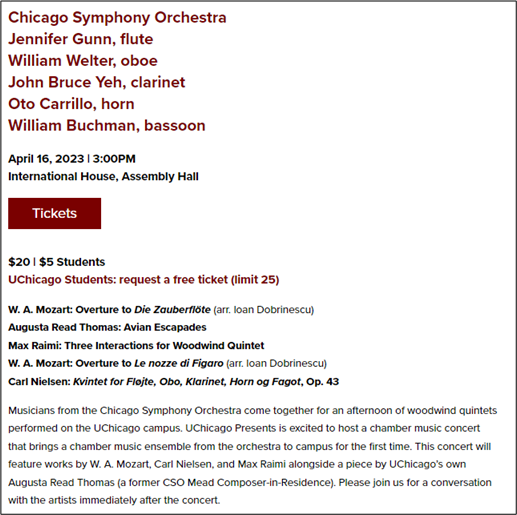
Figure 104: University of Chicago presents a concert performed by Chicago Symphony members. Two of the five works are Mozart opera overtures transcribed for woodwind quintet.xb5.com/f142
And although Goehr notices a certain inflexibility among composers with regard to instrumentation, she too summarizes many arguments made for transcribing orchestral pieces, namely that they do not fundamentally change the core of these works:
But on further consideration we find a reason for thinking that instrumental specifications are not essential to works. If they are essential, how do we account for the belief that even though many works are transcribed or arranged for different combinations of instruments, subsequent performances are usually taken to be of the same work? Works may be altered in many different ways and yet arguably remain the same works. There are transcriptions – cases of music originally written, say, for the violin now performed on the clarinet. There are orchestrations – cases where composers orchestrate works of other composers. Schoenberg orchestrated Brahms’s Piano Quartet in G minor, Opus 25. There are also cases of composers orchestrating their own works. Schoenberg specified that his Verklärte Nacht be performed either by sextet or orchestra. Copland specified that his Appalachian Spring Suite be performed either by a small ensemble or full orchestra. Finally, there are arrangements, say, Busoni’s and Kreisler’s arrangements of music originally composed by Bach. Fritz Kreisler ‘composed’ almost exclusively by arrangement, or ‘in the style of.’ (Goehr 2002: 60)
I argue that transcribing for chamber orchestra is a form of Rockwell’s “interpretive divergence in our ever-evolving performance tradition.” And I certainly agree that there is a place for both the “original” and transcribed versions, as Goehr points out above. Peter Szendy, in his book Listen: A History of Our Ears, “testifies to a concept of arrangement as a means of transmission, as a method of communication of the original, for which it is substituted from then on” (Szendy 2008: 38). This is exactly the case with my transcriptions. The original score for symphony orchestra is scored for too many players to fit in the smaller instrumentation of a chamber orchestra (or orchestra pit), so it is substituted by the transcribed version in order to make new forms of communication possible.
I strongly agree with Szendy when seeking to preserve the music of the classical music canon and making them more widely available to audiences. The work being transcribed is still recognizable to the listener as “the same work,” even though the orchestration and ensemble size has changed. Taking the reworking of Beethoven symphonies by Franz Liszt as an example, Szendy strongly encapsulates the goal and responsibility that I seek and bear in transcription:
Liszt wrote, in his preface to his transcriptions of Beethoven’s symphonies (Rome, 1835): ‘I will be satisfied if I have accomplished the task of an intelligent engraver, the conscientious translator, who grasps the spirit of a work along with the letter.’ And again, this time speaking about his piano version of Berlioz’s Symphonie Fantastique: ‘I scrupulously tried, as if it were a matter of translating a sacred text, to carry over to the piano, not only the musical framework of the symphony, but also the effects and the details.’ (Szendy 2008: 47-48)
Intelligent engraver, conscientious translator, grasper of the spirit of a work, sacred text translator, carrier of effects and details: transcriber. All of these roles come to bear when transcribing a work and the final version is the product of how I perceive these works. The changes I make in the process yield a new Klangideal, which is co-determined by my cultural, and musical background, as well as my aesthetic and ethical decisions. However, unlike Kivy’s description of personal authenticity as “the unique product of the individual” (Kivy 1995: 123), I don’t want the listener to think of my interpretation of the original work through the transcription process, or all of the granular aesthetic decisions and methodologies that I used, or of the inherent interrelationships between the original and transcribed work. Rather, I would prefer that they listen to a performance of my transcribed Symphonie Fantastique and forget that it was transcribed. I just want them to become enthralled and enraptured with Symphonie Fantastique.
These goals got muddied, however, as changes took place in the way that music was produced, distributed, and perceived, as well as the tools and processes that evolved to facilitate it. This will be explored in the next section.
3. How Technology Facilitates the Aesthetics of Transcription
Introduction
The technology used for transcribing music comprises the tools and methodologies used to take a composition from the brain of the transcriber and bring it to the ears of the listener. In my estimation, transcriptions, like other forms of composition, only truly exist when they are performed live. Until then, they are merely ideas in the transcriber’s head or dots on a page201. Technology has facilitated the inscription of a musical work from the earliest days of classical music202. While the tools available today on the computer cannot make someone a good composer or transcriber, they nonetheless can facilitate the enhancement of the aesthetics of transcriptions that lead towards the ultimate goal: live musical performance.
The technical implementations within notation software technology allow the transcriber to be more focused on the aesthetics of the transcription rather than on the time-consuming and labor-intensive tasks that were previously performed using pen and paper, although the old ways of writing music persist among some. They also maximize the abilities of the performing musicians in both rehearsal and performance by making their parts as clear as possible, thereby making efficient use of the group’s rehearsal time and greater accuracy during performance, thus enhancing the aesthetic impact of the performance.
Technology has provided new ways to make the transcription process more efficient and enables the ability to preview a work prior to hearing it performed by a physical orchestra. This is done by using synthesized and sampled sounds, providing notation editing capabilities that mimic modern word processing software, as well as minimize the labor intensive process of extracting parts from scores, among others203.
While the concept of technology facilitating the aesthetics of transcription might seem more practical than artistic, it is no different than an instrumentalist needing to practice scales and exercises in order to free themselves from technical boundaries in becoming a performing artist. The scales and exercises themselves are not aesthetic, but they provide the foundation that enables the artist to focus on the aesthetic qualities of their playing, such as expression and phrasing, in order for them to be able to communicate music in the best possible way to an audience. Music notation systems empower the transcriber with a powerful set of processes to set the music in their imagination down in concrete form quickly and efficiently and thereby help to facilitate it towards the ultimate goal of performance. Transcribers therefore can spend more time mulling over the aesthetics of their composition than the mechanics of music engraving. The tools in the software – editing, playback, part extraction, etc. – are the scales and exercises of transcription that free the transcriber to aesthetically create art. It is all part of a larger aesthetic continuum: from imagination, compilation, implementation, validation, transmission, to the live performance204.
Pre-Computer Music Composition Processes
Music Notation and Permanence
While this entire section is an examination of technology and transcription aesthetics, what preceded computer music notation systems is significant, given that they formed the basis for the processes and technology that were later implemented in computer software.
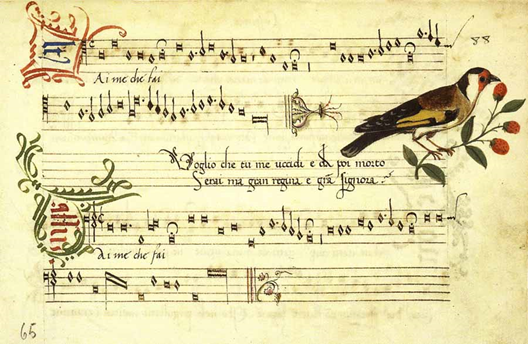 Figure 201: “Aimè che fai”, frottole for 4 voices, from a presentation songbook, c.1496. Modena, Bibltioteca Estense,it. 1221, fol.65v (Il Bulino)
Figure 201: “Aimè che fai”, frottole for 4 voices, from a presentation songbook, c.1496. Modena, Bibltioteca Estense,it. 1221, fol.65v (Il Bulino)
The older method of inscribing music was to use paper or vellum (in the medieval period) and a writing implement, such as a pencil or a pen (Tuppen: 2013). Engraving and notation techniques changed over time, as can be seen in the songbook example in Figure 201205. However, classical musicians still use Western music notation to encode and perform music, although some 20th-century composers extended the notation or invented their own notation (Hall).
The calligraphy of this Italian song (frattole) in Figure 201 uses an early notation system that is not fully understandable to most current classical musicians unless they study Medieval or Renaissance music206. But what is still recognizable are the familiar five line staff and noteheads, flags, and other symbology that survives today, and that make up the core of our current music notation systems as fully supported in computer music editing systems. Programs like Sibelius can support Renaissance mensural notation, but with some difficulty.
As in the painting in Figure 202 by French artist Nicola Turnier (1590 – 1638), early music notation systems changed music from an oral (sung) or aural (sung and instrumental) tradition in which songs were performed and passed on from one musician to another by ear, to achieving permanence: they could be passed on without relying on physical oral/aural methods. This was achieved by encoding music on paper using a notation system that enabled it to be passed to one or more performers with fewer modifications.
Something like this is suggested in the 1820 portrait of Ludwig van Beethoven (1770 – 1827) by Karl Joseph Stieler (1781 – 1859) in Figure 203, where he is apparently composing by encoding his musical thoughts using paper and pencil. This eliminated the need for performers to be physically present when music was being performed and transferred from one musician to another.
Thus, the frattole in Figure 201 lives on in written form today, whereas songs transferred via an oral tradition may change over time based on the interpretation of the performer or be lost altogether207. The permanence of written music lends itself directly to computer systems, which use data storage with which to retain and modify the information that it acts upon. Music notation systems share the data storage paradigm of the computer with the ability of software to create, edit, audit and retain music for distribution to performers.
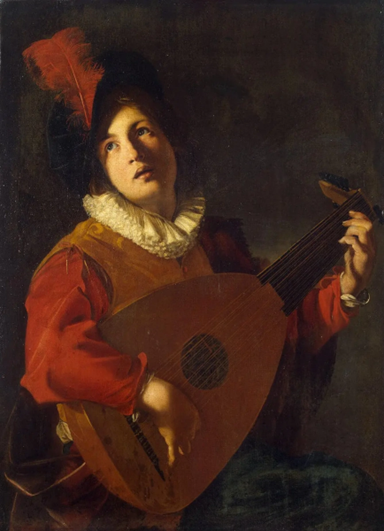
Figure 202: Turnier, Nicola (1590-1638) A man with a lute.
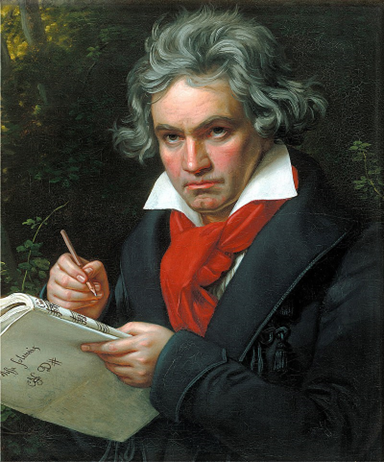
Figure 203: Portrait (1820) of Ludwig Van Beethoven (1770 – 1827) composing using paper and pencil by Karl Joseph Stieler (1781 – 1859)
Handwritten Scores
Handwritten scores like Weber’s in Figure 204 can be very difficult to read, and consequently very difficult to edit. With modern computer software, these difficulties are eased: once the score has been entered into a computer notation system, one has the ability to “cut and paste,” as can be done with word processing software. The method of writing a score by hand is very time consuming and does not lend itself to making changes or corrections easily. This can have an impact since the individual parts that make up ensemble or symphonic works are manually extracted and copied out by hand while maintaining note accuracy.
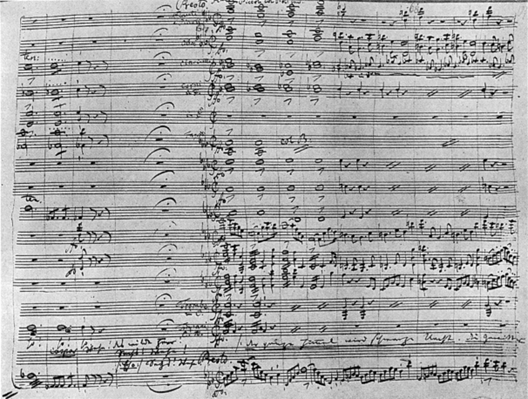 Figure 204: Hand written score for Act 2 of the opera Der Freischutz Op. 77 (1821) by Carl Maria von Weber (1786-1826).
Figure 204: Hand written score for Act 2 of the opera Der Freischutz Op. 77 (1821) by Carl Maria von Weber (1786-1826).
The Beethoven example in Figure 205 shows one of the limitations of writing music with pen and paper: it is difficult to make corrections or changes. This is very different from engraved editions of classical music. These were often created by publishing houses, so unless one was able to obtain a publishing agreement or was willing to hire a music copyist, the scores more likely than not would remain in the form shown in Figure 205. The advent of relatively inexpensive desktop computers and engraving software systems opened up and decentralized music publishing to the point that today anyone can create publishing-quality typeset editions208.
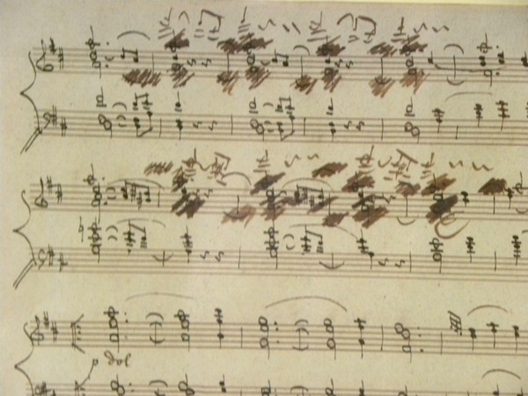 Figure 205: Crossed out score to String Quartet Op. 18 No. 1 (1792) by Ludwig Van Beethoven (1770 – 1827)
Figure 205: Crossed out score to String Quartet Op. 18 No. 1 (1792) by Ludwig Van Beethoven (1770 – 1827)
Attaining Audio Feedback During the Composition Process
Keyboard musical instruments date back to the 3rd century B.C. with the invention of the Ancient Greek hydraulis, which was an early type of pipe organ (Apel 1997: 9). Therefore, keyboards have been available to assist in the music writing process for millennia. The act of composing using a keyboard assisted many composers and allowed them to hear, verify and validate their conception of the harmony and voicing. See the portrait of Joseph Haydn (1732 – 1809) in Figure 206, apparently composing using quill pen, paper and keyboard.
Keyboards could not reproduce timbre or orchestration as they were not polytimbral, the exception being pipe organs with multiple manuals, each assigned to a different pipe rank timbre. The ability to physically hear what the composer heard in their head and saw on their scores using a keyboard allowed them to audibly verify at least part of what they were writing and imagining and gave them some sense of the aesthetic qualities of what they were writing. It also allowed them to improvise and create music using keyboard skills. The alternative was to get an orchestra together to read a symphonic composition.
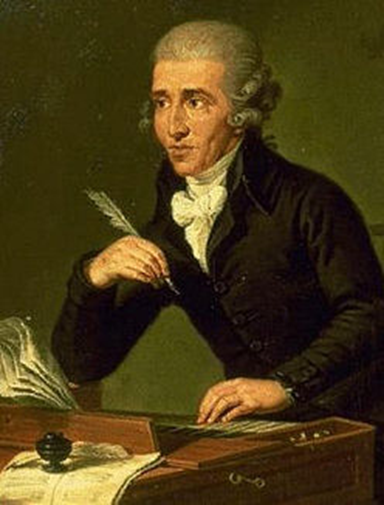
Figure 206: Portrait of Joseph Haydn (1770s) by Ludwig Guttenbrunn (1750 – 1819) Haydn using quill pen, paper and keyboard.
The ability to attain audio feedback during the composition process was transformed in computer notation systems when they began to render the audio of scores for playback using sampled and synthesized sounds. The audio quality of the computer playback feature has evolved to the point that some listeners can’t tell the difference between a computer rendered orchestra recording and an actual orchestra recording209. But the sound being rendered by the computer is still ultimately a recording, and not the sound of a live orchestra. Nevertheless, it is still highly useful for gauging the aesthetic qualities of a work being entered into a computer notation system.
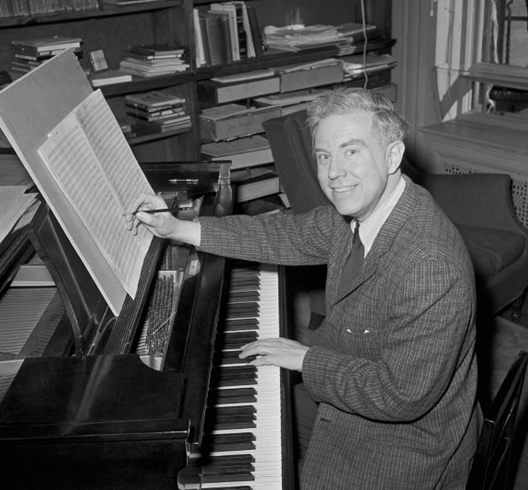 Figure 207: Elliott Carter (1908 – 2012) in 1960 composing with staff paper, pencil and keyboard (AP Photo/John Lent, File)
Figure 207: Elliott Carter (1908 – 2012) in 1960 composing with staff paper, pencil and keyboard (AP Photo/John Lent, File)
Many famous composers used the keyboard as part of their composition process, but not all, nor did they all adopt notation system technology. As Virgil Blackwell (Elliot Carter’s personal manager until the composer’s death in 2012) confided to me: “Elliott never used Sibelius or Finale, always the old pencil and paper just like John Williams210.”
The Elliot Carter photo in Figure 207 was taken 10-15 years before viable computer-based music engraving would start to emerge, and 28 years before the emergence of software like Sibelius.
Until the 1970’s, music was still written using staff paper, pencil or pen, and sometimes at the keyboard, and it was engraved for publication by hand using metal sheets and punches and knives, or newer mechanical devices such as a Music Typewriter (Figure 208)211. There were a number of music typewriters developed that were used for music engraving until they were supplanted by computer systems and printers.
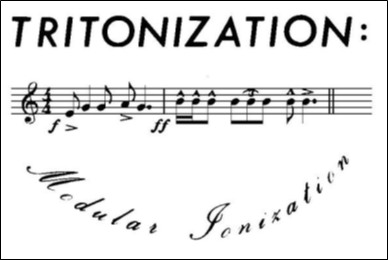
Figure 208: Example of a staff created using a Music Typewriter. By the author, circa 1977.
Some writers of music eschew the use of computer systems for music engraving today, and probably will in the future based on their personal preferences and needs. In all likelihood, if they are to be published, these handwritten scores are given to a music copyist who transfers them into a computer notation system.
Enhancing the Aesthetic Qualities of Music using New Technology
Computer music notation emerged in the 1970’s when Stanford University’s Leland Smith created a notation engraving program named “Score” on large mainframes. Eventually it was ported to desktop computers using the MS-DOS operating system. Score created high-grade typeset-quality sheet music that was initially printed on a computer-controlled plotter and eventually could be printed on an attached laser printer. Smith’s system never made it to computer operating systems with graphical user interfaces such as Microsoft Windows, or Apple’s macOS212.
When computer music notation systems first emerged, they enhanced the music printing process, but did not provide aesthetic functions for composition. Two market leaders emerged for graphical music editing: Sibelius and Finale. Both provide visual music editing in PC/Windows and Apple/macOS workstations. Finale came out in 1988 and Sibelius in 1993, and they continue to improve with new features and regular releases, although Finale was pulled from the market by its owners.
Transcription Using Computer Notation Systems
Computer notation systems bring significant advantages, like cutting and pasting, automatic transposition and many other features (warnings about instrument ranges, etc.). These allow music to be written much more rapidly than manual scribing systems. More importantly, they also allow the transcriber to focus more on the aesthetic qualities of what they are writing than the time consuming and painstaking manual processes of writing notes onto paper by hand.
Notation Software Challenges
Software like Sibelius can be very powerful, but in many ways they are like purchasing a professional-grade camera. One may be able to use these very sophisticated pieces of technology, but they don’t give you an aesthetic eye for taking great photos. Having powerful notation software doesn’t necessarily make someone adept at making transcriptions.
For all of the sophistication of these notation software systems, they can’t stop someone from writing impractical or unplayable parts or poorly edited scores and parts. However, they do give warnings about parts written out of the known range of the underlying instrument.
Software programs can be arcane, highly complicated and difficult to use, which can make them less effective in practice. Because of their complexity, I have always felt that every time I undertook a new project using Sibelius software, I learned something new about how to solve a certain notation problem. Because of their complexity, it can be difficult to remember or figure out how to get programs to perform some of the tasks of which they are capable. Unlike musical instruments, which are built to specific standards (keys, strings, valves, etc.), software can have an enormous amount of functionality that can be expanded over time and can cross multiple genres. Some projects have specific requirements, for example when writing for jazz or choral ensembles. While the metaphor of learning scales on an instrument and learning how to use the software mentioned in the introduction to this section still holds, the use of support materials like compiled notes, software “help” sections, user groups where one can post questions – or even using Google to search for an answer – all buttress the basic ability to achieve one’s notation goals.
Notation systems require thorough knowledge of notation and engraving in order to create professional quality sheet music, and the systems are not great at certain functions, like finding usable page turns in the parts, or of formatting scores and parts. This is explored in the next section.
Achieving Value from Part Extraction
Extracting individual parts from a score is a powerful tool provided by notation systems. But getting them to create publication quality parts can be challenging. Part extraction is examined here as an example of how a very robust software function can require significant work and skills in order to derive benefit. It can also affect the aesthetic aspects of the transcription.
Figure 209 is an example of an instrumental part that the Sibelius notation system extracted from a score. In this case, it is the Violin 1 part to my transcription of Act I of Tchaikovsky’s ballet The Nutcracker Op. 71 (1892) for chamber orchestra. The formatting of parts can require complex skills in order to bring all of the parts up to professional engraving quality. Poorly formatted parts have a direct effect on the aesthetics of the transcription. If the parts are difficult to read and bad page turns interfere with their ability to play continuously, then performers will make more mistakes and take up time that could be spent focusing on other rehearsal-related issues, or aesthetic issues such as expression and interpretation. This can lower the quality of the final performance, since the amount of rehearsal time allotted for a performance is usually fixed. Therefore, poorly formatted parts can cause aesthetic aspects of a performance to be diminished.
Instrumentalists as well as the conductor can devalue the overall aesthetic worth of a work and won’t want to perform it because of poorly engraved parts in addition to a clumsy arrangement213. Instrumental part legibility, as well as a host of other seemingly technical notation issues, including wrong notes, can result in reduced aesthetic outcomes when performing a work, and can lead to it being replaced by another version, or not being performed. This is confirmed by John Wilson, conductor of the Sinfonia of London:
You’d be amazed at the difference good quality orchestral parts make to performance,” he said. “They can make it or break it. You can hit the ground running without having to decipher things. (Wilson in Morris 2023)
Note the raw form of this page in Figure 209, as initially created by Sibelius notation software, of a page of the violin part from my transcription of Act I of The Nutcracker. It is of very poor quality, the spacing and proportions make it difficult to read, and its use would result in serious complaints from the musicians.
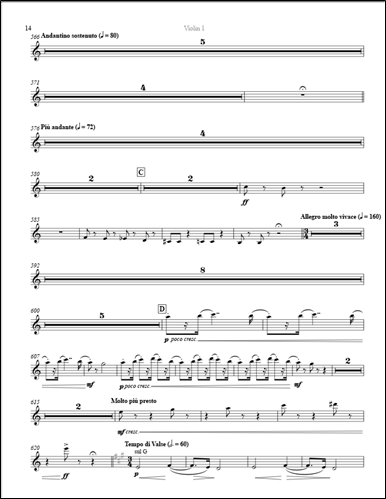
Figure 209 An example of an unedited part extracted out of a score by Sibelius.
Figure 210 shows the same part after significant manual editing. Substantial notation skills are needed to reach this quality of engraving. This is the level of work that musicians expect to see. Anything less can potentially result in poorer aesthetic outcomes, and it might even result in the work being rejected by the performers outright.
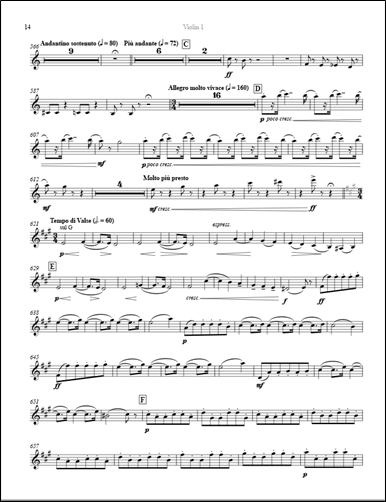
Figure 210: Same part after significant manual editing.
The Value of Notation System Sound Rendering
Computer software allows one to use their ears in the process of transcription and validation and to hear renderings of works created using sampled and/or synthesized sounds. These can be added on to the notation systems and are quite realistic, ranging from the $129 NotePerformer to the $10,000 – 20,000 Vienna Symphonic Library (VSL). Such software addons offer many more possibilities for audio preview of a work before live performance takes place than composing at the piano provides the transcriber214.
It is useful to listen to computer playback using a high-end set of headphones as the fidelity can allow for more detailed listening. This gives one the possibility to hear a rendering or approximation of what the work is likely to sound like when performed, and whether that rendering matches what one had in mind. The higher the fidelity of the playback, the better one can judge the aesthetic aspects of the work.
It also allows errors such as wrong notes to be detected by listening to the playback. In this instance, validation is achieved by using the ears rather than being limited to looking at the sheet music with the eyes.
The playback capability of notation systems using add-ons like NotePerformer and VSL can create remarkable renderings of transcription scores, to the point that when I shared this audio with colleagues, they have remarked, “what orchestra is that?” The quality of the rendered audio can be extraordinary, especially when produced with high quality sampled sounds. Listen to these YouTube examples with high fidelity headphones, if possible:
First, here is how Rimsky-Korsakov may have composed his canonical orchestral showpiece Capriccio Espagnol at the piano:
#1: xb5.com/f169
As stated earlier, this gives one an idea of the notes, harmony and voicing but nothing about the orchestration or even an inkling of what the composer may have been intending it to sound like in performance. For example, you cannot tell that a clarinet solo starts in bar 17 by listening.
Next, Rimsky-Korsakov: Capriccio Espagnol transcribed for chamber orchestra by me, rendered by Sibelius using the NotePerformer plugin:
#2 xb5.com/f170
This was 100% produced by the Sibelius notation program on the computer as rendered by the NotePerformer addon using a combination of sampled and synthesized sounds. This gives a completely different perspective on the work and how it is orchestrated compared to the piano version above.
Finally, here is the exact same transcription performed by the Janacek Philharmonic Ostrava in a recording studio with audio engineering by Zarex Corporation:
#3 xb5.com/f171
The aesthetics and sonics of this recording are better than examples 1 and 2 above, but this required hiring a recording studio, a professional orchestra and a recording engineering firm to create the final product. While it is an outstanding recording, it is like Frankenstein’s monster: it was stitched together from a variety of takes and was recorded using multiple microphones. It also cost many thousands of dollars. The NotePerformer software that was used with Sibelius to create the audio in #2 costs $129 for a single use license, whereas the cost of recording with the Janacek Philharmonic Ostrava cost roughly $14,000, although their purposes are different: Sibelius/NotePerformer is a tool for transcribers and the Ostrava sessions were held in order to create a recording.
Third Party Copyists and Reviewers: The Internet and PDFs
Because of the geographical reach of the internet and standardized digital document formats like PDF, one can engage music copyists familiar with notation software to assist in the transcription process. They can live anywhere in the world and musical works can be near-instantly transmitted back and forth using email. Copyists in Nebraska and Kazakhstan are used to help with some of the labor-intensive aspects of transcription, such as entering an original score into Sibelius or proofreading. When the score to Strauss’s Salome’s Dance needed to be entered into Sibelius format, a music copyist in Nebraska was engaged to enter most of the score and he emailed back a Sibelius (.sib) file. These became musical assistants, much like the assistants that carried paint up and down the scaffolding when Michelangelo painted the Sistine Chapel (King 2003: 66).
Entering the original work into digital form is a prerequisite for transcribing works on the computer. Using a third party for entry allows for the transcriber to focus more on the aesthetics of the transcription. By using a third party professional that is an expert on score entry and proofreading, the transcription can be of higher quality and less prone to errors. In the worst case, an error in the original digital version may be carried over to the transcribed version215.
One can also extract all of the parts to a score, render it in PDF file format and email it out for review by the individual instrumentalists. This allows one to gather feedback on the transcription well ahead of any reading sessions or rehearsals, as well as catch errors that might take up rehearsal time or otherwise reduce the aesthetics of the work.
This could all still be achieved using pen and paper and the mail to send out parts for review, but that is impractical. Nowadays, orchestra players use email as a common practice for disseminating information, and PDF files for distributing digital copies of sheet music.
Notation System Best Practices
Today’s software notation systems bring capabilities to the transcriber that could only be dreamed about in the pre-computer days. Because of the complexity of these programs, they can be used in many different ways, enabling and enhancing the aesthetics of the transcription. In my experience, I have found that certain software functions like “Optimize Selection” and “Reset Note Spacing” to be critical to making the formatting process more efficient, thereby freeing up time for the transcriber to focus on the aesthetic qualities of the transcription.
Here are some methodologies developed to enhance the process of transcription and improve the aesthetics of the resulting work:
Modeling Orchestration Within a Notation System
One method that can be used when evaluating the aesthetics of a section is to highlight the staves that are being considered for use in the transcribed version and having the software selectively play them back. This way one can model and evaluate the aesthetic nature of what the transcribed section will sound like before committing to the changes. See Figure 211.
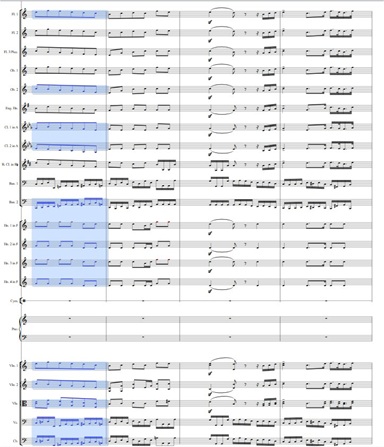
Figure 211: Aesthetic modeling by selecting voices (in blue) to play back.
Visual Transcription (Old at the Bottom, New at the Top)
Another method is to put the new staves of the transcription at the top and old staves of the original score at the bottom. Thus, part of the process of transcription can be a matter of methodical cut and paste. One is not limited to the size of the virtual staff paper within the notation program and can change it to any size. Therefore, in the example in Figure 212, the size of the page is set to 10” x 18” so that all of the staves can be comfortably seen on one page216.
With so many staves on the page, one can easily become disoriented and make mistakes, lowering the aesthetic quality of the performance. This technique of resetting the page size allows one to keep track of where one is working on the page and improves the ability to take the ideas in the transcriber’s head and translate them into their conception of a transcribed page of music. Others may do this differently, but my method has proven to be an effective way to manage the transcription when dealing with many staves.
Also, because there are so many staves on the page in music scored for a large orchestra, another technique is to mark the name of the target transcribed parts with an “x” at the end, such as “Fl x.” Since there are staves for flute in the original score, it is easy to get confused as to what the transcriber is focusing on: are they the new staves or the old staves? This way they are visually differentiated. Again, it allows one to keep track of what is actually being worked on so that the focus can be on the aesthetic result: how it sounds when it is performed. See Figure 213.
While these techniques may seem more like organizational than aesthetic processes, they are highly important as the overall process of transcription can be very complex, especially when dealing with a large score like The Nutcracker, which is over 500 pages long and is scored for a large symphony orchestra. The techniques proposed here help to minimize this complexity and aid the transcriber in focusing more on the aesthetic qualities of the transcribed score, which ultimately affects how the performance will sound. These are not the only techniques available in assisting the transcription process (as they are numerous), but they give an idea of how these systems help facilitate and minimize the mechanical processes so that the focus remains on the aesthetical aspects of transcribing. These are large differentiating factors between the manual processes of yesterday, and the technological processes of today.
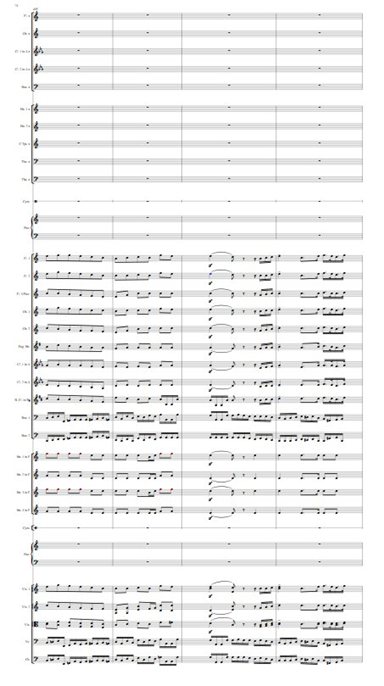
Figure 212: Extended score showing both old and new voices.
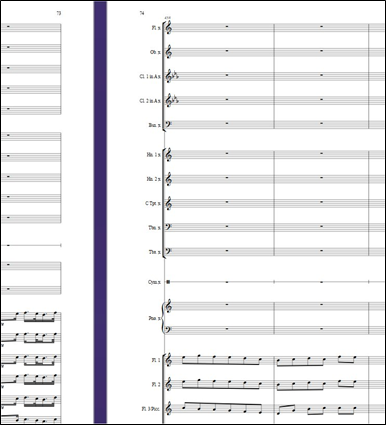
Figure 213: Distinguishing between old voices and new voices.
Conclusions
Music technology evolved over time to help facilitate the aesthetics of transcription. It now provides powerful computer tools that enable people who write and engrave music to create, edit, validate and listen to the work that they create prior to it being physically played. The software is highly complex and requires skill in order to produce publication-quality sheet music.
Putting music to paper gave compositions permanence where they would have otherwise been lost or changed when passed by ear from one person to another. Moreover, it formed the basis for the processes and technologies that were later implemented in computer software notation systems.
Handwritten scores can be very difficult to read and edit once they are put down on paper using ink, and in the case of instrumental scores the individual parts need to be manually extracted, which can introduce errors. This was overcome when a publishing agreement was obtained or if a music copyist was hired, unless the composer himself had the time, inclination and skills to create engraving-quality manuscripts.
Keyboards were used by many writers of music as part of their compositional process, as it allowed them to physically hear the music that was in their head. But since these instruments are not polytimbral (except for organs), they do not provide aural feedback for orchestrations that use multiple instruments. This limitation has now been overcome by computer notation systems, which can provide renderings of works that have been created with their software using synthesized and/or sampled sounds. It also provides for error checking and validation using the ears in addition to the eyes.
Computer music notation software emerged in the 1970s and have evolved into relatively inexpensive systems that enable desktop music publishing, which was previously mostly the purview of publishing companies. This software notation technology gives the transcriber some powerful tools with which to facilitate the transcription process and reduce what were previously some very time consuming manual processes.
The functionality in these systems can greatly enhance the aesthetic processes of transcription (as well as increase productivity). Some examples of this are part extraction, audio preview and sound rendering, and the ability to integrate the use of third parties and reviewers by transferring music digitally using the internet, email and PDF files. There are also many best practices that can be learned and developed that can enhance the writing process such as orchestration modelling and visual transcription.
Given the complexity of today’s notation software, the effect of technology on the aesthetics of transcription may be more directly related to a person’s skills at operating those programs than their own sense of aesthetics. But it has given writers some very powerful tools that, when used effectively, can enhance the aesthetics of the works that they create as well as enable the publication and distribution of their music by individuals in ways that were previously limited to corporations.
But all of this digital technology has also opened the way for ethical issues, which will be discussed in the next section.
4. The Ethics of Music Attribution
This section examines how changes in musical production processes, technology, and media have affected our understanding of some of the ethical issues associated with the attribution of credit to those who contribute to the making of a musical work, either transcription or other musical forms.
Introduction
The evolution of how music is created in our current era, replete with computers and software, raises questions about who actually authored a musical work. Lydia Goehr has posited that the concept of attribution has a long history that only began to be clarified around 1800. Prior to that time, there was little regulation of what constituted a work, or what Goehr has referred to as a “work-concept”:
“We need to distinguish two potentially distinct claims: first, prior to 1800, the work-concept existed implicitly within musical practice; second, prior to 1800, the work-concept did not regulate practice.” (Goehr 2002:114)
Before that period, there was little or no concept of music as intellectual property, especially since composers were in the employ of rich patrons or religious institutions. In other words, works were presented for entertainment, sacred or incidental music. There was no concept of the concert hall for the formal presentation of music yet. (Goehr 2002:115) It was not until after 1800 that composers such as Berlioz and Liszt began to control and identify their works as their own. Prior to that time, composers freely used materials from other composers, or themselves, or in the case of opera scores – final adjustments to the music were commonly made at or before performances by others301. This likely is what has made the cataloguing of works by Wolfgang Schmieder (1901 – 1990) of J.S. Bach’s (1685 – 1750) works and Ludwig von Köchel (1800 – 1877) of Mozart’s (1756 – 1791) works such a challenge – applying rules developed later to works prior to that period. This is summed up by Goehr:
This way depends upon our importing a conceptual understanding given to us when the work-concept began to regulate practice. Just as a piece of pottery or a pile of bricks can come to be thought of as, or transfigured into, a work of art through the importation of the relevant concepts, so, since about 1800, it has been the rule to speak of early music anachronistically; to retroactively impose upon this music concepts developed at a later point in the history of music. Implicit existence has become here essentially a matter of retroactive attribution (Goehr 2002:115).
While the attribution of a work became clearer after 1800 by composers assigning opus numbers to their own works, the practice of using musical materials from other composers continued through explicit transcription302.
The complexities associated with attribution continue to this day. As we will see below, there are cases where a work is represented as having been created by a single individual when in fact there were more people fundamentally involved in its creation. It also raises the question of attribution in my own transcriptions. Did the person identified as the composer actually write the work? Did I? Consider the following:
I created my very first transcription when I was in college and asked to perform the chorale Jesu Joy of Man’s Desiring from J. S. Bach’s Herz und Mund und Tat und Leben – Cantata No. 147 for a wedding ceremony. I did not have a version of that work scored for my woodwind trio at the time303. I went to the library and found an arrangement in three voices for organ which had all of the right ranges for my ensemble of two clarinets and bassoon, and I hired a student to copy and transcribe the parts from that arrangement into individual parts for my trio.
Years later I included this transcription into a collection that I published for trio. When I had originally created that transcription, it was solely meant for a specific job; including it within a publication made me feel uncomfortable because I gave no attribution to the original source of the transcription. My justification at the time was that since Bach’s works are all in the public domain it didn’t matter, and that making it into trio format changed the original arrangement enough that I could claim ownership. But looking back at it, my role in the creation of that trio was one of manager, not transcriber, and justification felt disingenuous since I was never involved beyond finding an existing arrangement and directing a copyist to make it into trio parts according to my specifications.
Later on, I either used existing arrangements as source material for my own transcriptions or worked from the original score. The latter was more challenging but eliminated the ethical issue of attribution of authorship. For example, there is an often-performed arrangement of Mozart’s Fünf Divertimenti für drei Bassetthörner, KV 439b (1783 – 1788) for two clarinets and bassoon in publication. (Finney 1933) When I wanted to add these five works to my trio collections, I went back to the original score and created my own transcription for two clarinets and bass clarinet, thus eliminating any copyright conflict with the two clarinet and bassoon publication. Similarly, when I transcribed the third movement of Berlioz’ Symphonie Fantastique (March to the Gallows) for trio, I made my transcription from the original score. But my earlier transcriptions, that had been based on other people’s arrangements, felt to me like a gray area in terms of the ethics of authorship.
Having transcribed five works for chamber orchestra, I did and do continue to leverage some work by other people, and these activities fall into two areas:
- I sometimes use copyists to transfer a work from a physical score into my notation program. Sometimes I employ a proofreader to check for errors.
- I will sometimes consult with outside experts, for example over issues with percussion or harp parts.
Upon reflection, I feel comfortable with my own ethics with respect to the authorship of my chamber orchestra transcriptions, since I perform all the actual transcription activities that take place on my computer when I change a work from symphony orchestra to chamber orchestra format. But this raises an issue that requires further examination.
The Changing Roles of Works
Walter Benjamin pointed out in his 1935 essay The Work of Art in the Age of Mechanical Reproduction that advances in technology expanded the ways that works of art could be used and reproduced. Benjamin warned that mechanical reproduction changed a work of art so that the “quality of its presence is always depreciated”. He also noted: “that which withers in the age of mechanical reproduction is the aura of the work of art.” (Benjamin 1935: 4)
Benjamin uses the concept of aura to refer to the uniqueness that is derived through human sense perception, which he believes can change over time and by the action of history, such as the sixth century birth of the late Roman art industry and the Vienna Genesis. The Vienna Genesis was an early Christian biblical illustrated codex, which combined pictorial techniques with content to the telling of the Genesis story. (Reilly) The inclusion of illustrations may have given the biblical text the additional perception of visual illustration of bible stories rather than just text. See Figure 301 below:
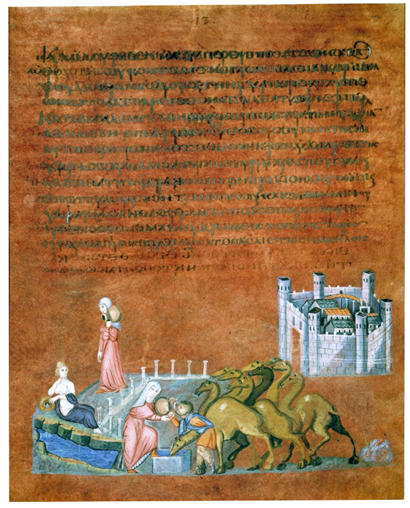
Figure 301: Rebecca and Eliezer at the Well, folio 7 recto from the Vienna Genesis, early 6th century, tempera, gold and silver on purple vellum, 31.75 x 23.5 cm (Österreichische Nationalbibliothek, Vienna)
Benjamin also applies the concept of aura to natural objects:
The concept of aura which was proposed above with reference to historical objects may usefully be illustrated with reference to the aura of natural ones. We define the aura of the latter as the unique phenomenon of a distance, however close it may be. If, while resting on a summer afternoon, you follow with your eyes a mountain range on the horizon or a branch which casts its shadow over you, you experience the aura of those mountains, of that branch (Benjamin 1935: 5).
The concern about a work’s aura can be applied to the act of arranging or transcribing, where the final product can be significantly different than the original. But it can also make it available to a new audience in a new format, which is one of the arguments I make here.
It is easier to exhibit a portrait bust that can be sent here and there than to exhibit the statue of a divinity that has its fixed place in the interior of a temple. The same holds for the painting as against the mosaic or fresco that preceded it. And even though the public presentability of a mass originally may have been just as great as that of a symphony, the latter originated at the moment when its public presentability promised to surpass that of the mass (Benjamin 1935: 7).
On the basis of Benjamin’s reflections, I will argue that the role of a piece of music may change based on its ability to be facilitated in a different form and transported to a different setting and public presentability. This creates challenges when making sure that attribution is made properly and ethically for those who participate in the creation of the work along the way.
Attribution in Star Wars
As an example of the different formats and functions that a work of music can take, I examine the film score for Star Wars. If we want to hear it we can buy it, stream it, or view the film in a movie theater. Moreover, symphony orchestras and concert bands regularly perform music from Star Wars in a concert setting, and composer John Williams (born February 8, 1932) has even guest conducted his Star Wars music with one of the world’s greatest orchestras, the Berlin Philharmonic. (Williams 2021) “By the absolute emphasis on its exhibition value the work of art becomes a creation with entirely new functions,” says Benjamin. (Benjamin 1935: 7) Though Benjamin was speaking of the relationship between a painting and photographic reproductions, his argument can also be applied to the music that John Williams composed for the original Star Wars movie: performing it live in the concert setting provides the means for it to take on a new artistic function and for it to be shared with audiences outside of the movie theater.
But the case of the music from Star Wars being performed in a concert arrangement raises the question of whether that orchestral version can ethically be attributed to John Williams alone. As is examined in the next section, Attribution of Other Composer’s Works, Williams leveraged music by Stravinsky and Holst in his film score. But this question became even more urgent as new forms and venues were created for the Star Wars score. What the Berlin Philharmonic performed was in fact not what John Williams wrote for the movie score: he had written a series of movie cues, and not something meant to be performed in a concert hall. These movie cues were then later mixed and matched together by an arranger into a performable concert piece. Representing the music performed by the Berlin Philharmonic as “Star Wars by John Williams” raises a serious ethical issue. I would like to examine this issue in light of my own questions about transcription authorship.
The creative process of composing music has morphed from exclusively writing music that could only be performed live by musicians (often in the home), to also writing music for other media. Music is still performed live, but it also includes recordings or movies like Star Wars, and online gaming as they evolved in the 20th century. As a result, issues of authorship have changed. The attribution of authorship to the Star Wars music becomes unclear when one considers that when Williams wrote the score to the Star Wars movie in 1977, he employed an orchestrator, Herbert W. Spencer (1905 – 1992), as his assistant. He gave Spencer specific ideas for the orchestration, but left the actual orchestration to him. Further, major US sheet music distributor J. W. Pepper lists twenty-four orchestral arrangements of Star Wars in their catalog, and not a single one attributes the arrangement to John Williams. It is likely that when one hears a concert performance of Star Wars, at least in America, it might not have been arranged by Williams. (J.W. Pepper 2023)
So, the question can be asked: was the Star Wars movie score really written by Williams? Even more vexingly, after handling by an orchestrator and an arranger, can the orchestral concert arrangement still be considered the same work304? (Goehr 2002:60)
I argue that the answer is both yes and no: yes, Williams wrote the melodies and harmony, but what he composed were movie music cues. Therefore, it is no longer the same work by the time it makes it into concert format – his melodies and the orchestration indications that he gave to Spencer have been transformed by others. The sound of the Star Wars concert arrangements are similar in terms of melody, harmonies and orchestrations to what can be heard in the movie theater, but the structure is completely different. Many other aspects of the arrangement may be different as well, such as the orchestration and even movement endings since many movie cues do not necessarily have formal endings when they are following the movie’s video. Yet, despite all of the transformations that the music has gone through since it was written for the cinema, as well as the people involved that changed it or helped create it in the first place, such as Spencer mentioned two paragraphs above, it is still the recognizable music of Star Wars to the concertgoing audience.
This recognition should come as no surprise given how much the Star Wars franchise has become engrained in American culture. As Rebeca Valverde emphasizes in her blog post Creating a memorable melody, “Melodies, oh melodies! They hold the power to captivate, to stir emotions, to make a song memorable.” (Valverde 2023) I would argue that one would be hard pressed to find people that do not recognize the following melody from Star Wars305:

Figure 302: Main Title theme from Star Wars
However, I have also been in a situation where I arranged someone else’s music for use in performance, but the attribution as to my role in the final product was made very clear. In 2010, I managed a showcase for the South By Southwest Music Festival in Austin, Texas306. For the last of the six sections, we combined musicians from the earlier showcases to perform some of the music from Blizzard Entertainment’s massive online game World of Warcraft. I collaborated with Blizzard’s music supervisor Russell Brower, who assisted me in selecting the music as well as lending their original scores to me. I arranged those works for the instruments available in the earlier showcases and Brower reviewed and approved these arrangements. At the performance, it was announced that I had arranged all of the music that we were about to perform, so there was no question as to my role, and my arrangement work received full attribution.
The examples above cite cases where attribution is explicitly made and not made. Attribution was given for the arrangements that I made of music for South by Southwest, and attribution was not made for Spencer’s orchestration used in later versions of the music of Star Wars. In the Introduction to this section, I expressed concern about lack of attribution for the trio arrangement I made of Bach’s Jesu Joy of Man’s Desiring during my college years. Today I would simply go to the original score as source material and create the trio based on that score, as I have done many times since then in transcriptions of other works, eliminating any ethical conundrum about attribution. More recently, I created transcriptions of symphonic works for chamber orchestra, and since then also transcribed the Nutcracker Ballet for chamber orchestra. I would argue that the individuals that assisted me with copying and proofreading the transcribed chamber orchestra scores weren’t involved in the actual transcription process, therefore don’t merit explicit attribution. But they did help, therefore I include them in the “Thanks go out to the following individuals that assisted me” section of my scores, even though it isn’t ethically necessary.
Attribution of Other Composer’s Works
Moreover, additional questions about the authorship of the Star Wars music are raised by the fact that not all of the music in Williams’ score was original. When the movie was released in 1977, many classical musicians immediately pointed out places where Williams had incorporated music written by other composers into his score. Here are two examples:
From Igor Stravinsky’s The Rite of Spring:
In this first example, Williams imitates the undulating eighth notes in the upper woodwinds of the “Second Part, Introduction” to Stravinsky’s ballet score The Rite of Spring, shown in Figure 303. When this is compared to “The Desert” in the original Star Wars movie score in Figure 304, the undulating eighth note figure has the same harmony, key and exudes the same desolate atmosphere.
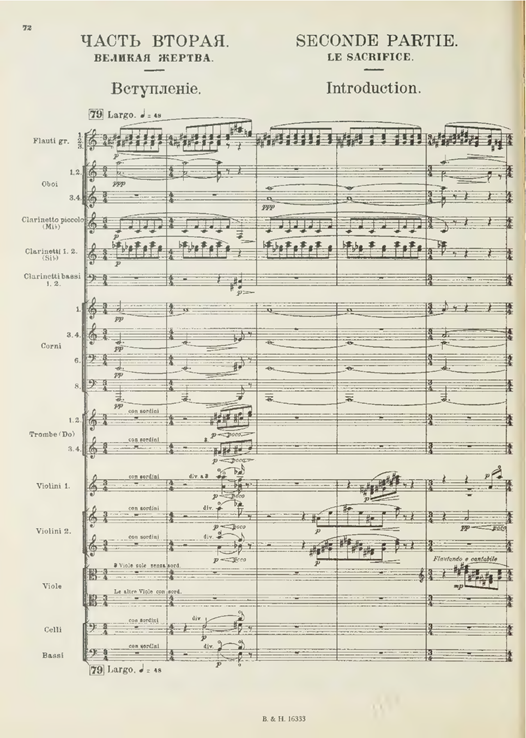
Figure 303: Igor Stravinsky – The Rite of Spring, Second Part, Introduction. 1921 version.
Igor Stravinsky: The Rite of Spring “Second part. The Sacrifice. Introduction” (Chicago Symphony 1994)
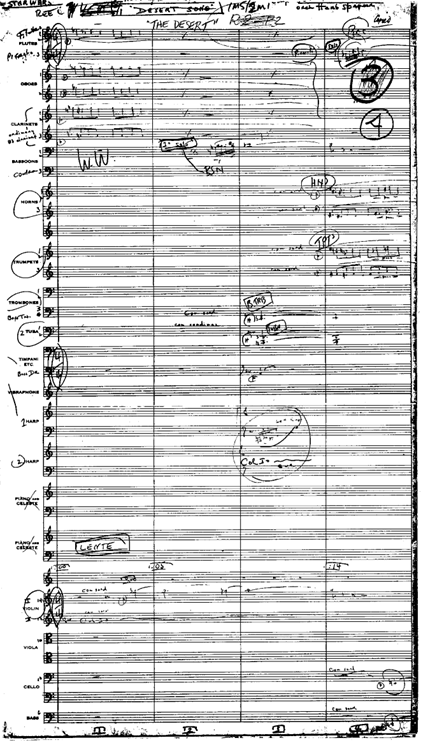
Figure 304: John William’s film score cue “The Desert” from Star Wars (1977).
John Williams: Star Wars – A New Hope “The Desert”
From Gustav Holst’s The Planets
In this second example, Williams almost exactly copies the climactic last eight bars of the first movement Mars from Gustav Holst’s symphonic work The Planets, as shown in Figure 305. Starting in the third bar of Figure 306, Williams again uses the same harmony, key, and texture. He also copies the same mixed duplet/triplet figure separated by grand pauses as in the Holst excerpt, and same rallentando that takes place at the end of Figure 306, third page, second bar.
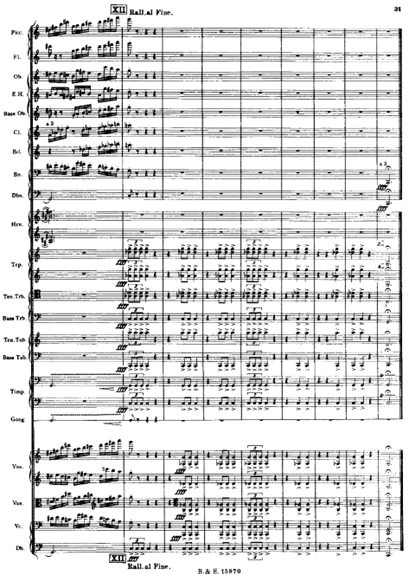
Figure 305: Last page of the score to “Mars” from Gustav Holst: The Planets (1921)
Gustav Holst: The Planets “I. Mars, The Bringer of War”(Chicago Symphony 1990)
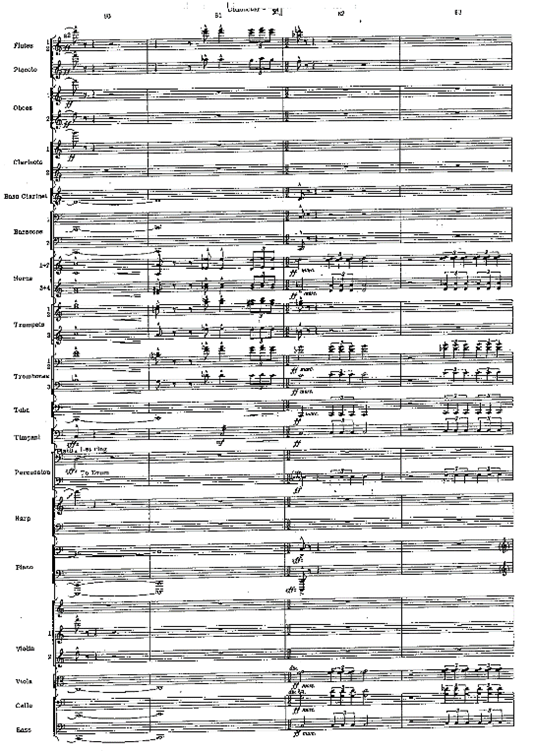
Figure 306: John Williams. Score to Star Wars: A New Hope, “Main Title” cue.
John Williams: Star Wars – A New Hope “Main Title”
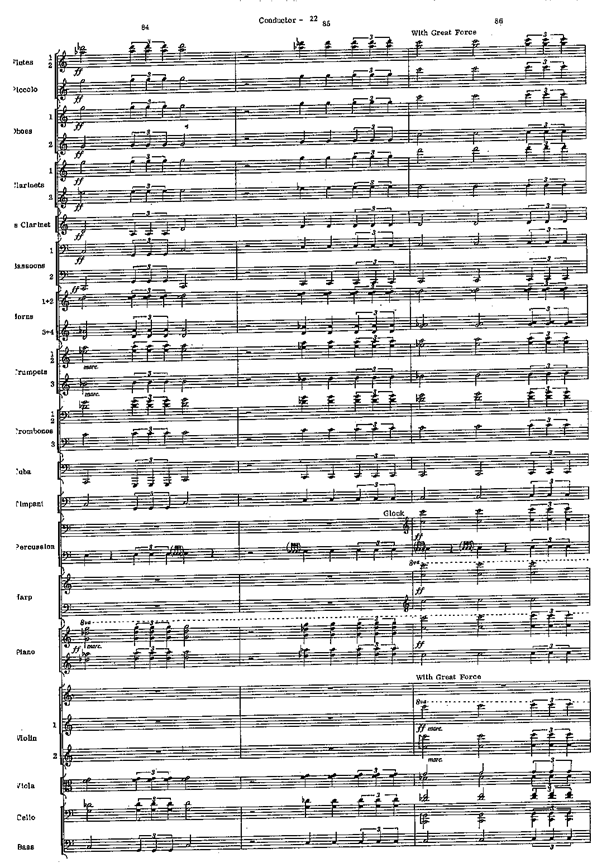
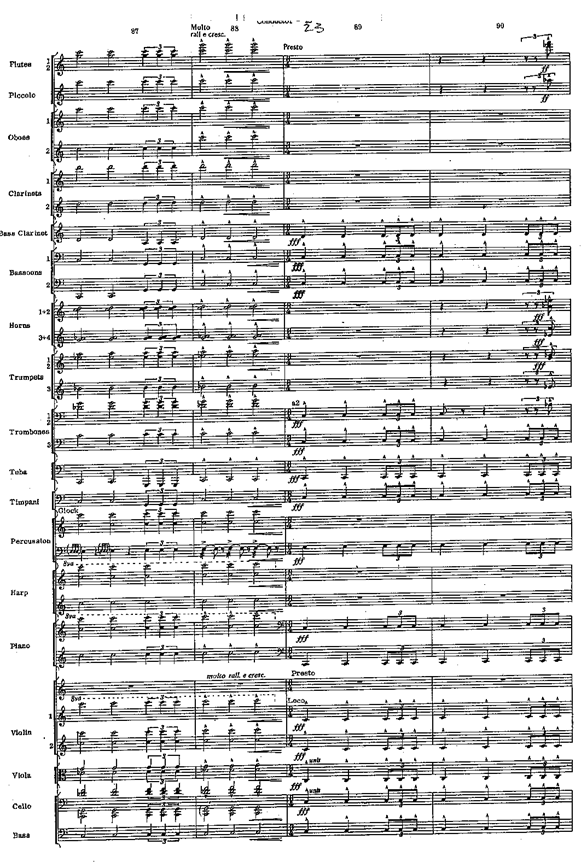
I would argue that in this case, Williams crossed into appropriation when he used the two examples from Holst and Stravinsky above. Appropriation – borrowing elements in the creation of a new piece – in of itself is nothing new; Rudolf Frieling, Curator of Media Arts at the San Francisco Museum of Modern Art points out in his guest column Appropriation / Collaboration for the University of Michigan Arts & Culture that:
“Technologies of copying, editing, and distributing have profoundly changed how artists process and use information as material for their own work. ‘Collage’ and ‘montage’ are key terms of that history from Dada and Surrealism to avant-garde film and media art.” (Frieling 2014)
Collage and montage were not new at the time Star Wars was scored, nor was he the only composer of film music to make use of appropriation: a sharp listener can identify many instances of classical works used in the soundtracks of movies and video. What I want to point out here is that few attributions are properly identified and acknowledged in the credits. I suspect that because they are using public domain works, and since there are no royalties or performance rights issues involved, the studios don’t feel that they legally need to identify them. On the other hand, I would consider it unethical to present my transcription of the Nutcracker Ballet without acknowledging that it is based on Tchaikovsky’s work. But as with John Williams’ appropriations for Star Wars, I could.
Considering that the music in a concert performance of Star Wars is a combination of music from a number of composers in addition to Williams (Holst, Stravinsky, etc.), as well as an uncredited orchestrator and a third party arranger, I would argue that what one hears is a musical chimera, a hybrid composition with parts from different creators.
Attribution in Other Art Forms
The involvement of multiple individuals in the creation of works is not exclusive to music and can be seen in other art forms. No matter the medium, they raise the same ethical questions, as the process of their creation is moved further away from the artist who claims to have created the work in question. How the attribution of that work is presented as well as the nature of the contributions by others can determine whether the attribution is ethical. Becker raised this as an issue.
Another difficulty arises when someone claiming to be an artist does not do some of what is regarded as the irreducible core of what an artist must do. Since the definition of the core activity changes over time, the division of labor between artist and support personnel also changes, leading to difficulties. How little of the core activity can a person do and still claim to be an artist? (Becker 1982: 19)
There is ample historical precedent for unacknowledged collaboration that results in a recognizable work, even if their contribution to the artwork is relatively minor. For instance, John Parks, in his blog essay The Marks of a Prolific Master: Drawings & Studies by Rubens on the Artists Network website, points out that famous painters like Rubens used live models for making drawings, and this practice was used by Jacob Jordaens and Van Dyck as well. (Parks 2007) While the model’s contribution was relatively minor, they were still an essential part of the creative process by providing visual material that was used by the artists and memorialized in the artwork. It is also well known and documented that Michelangelo used many assistants for painting the Sistine Chapel. (King 2003: 66) But in that case, his assistants were mixing his paints, and delivering his materials by climbing up and down ladders; they weren’t painting the ceiling or sitting as models.
The decision for when those involved in the creation of an artwork should warrant attribution can be somewhat of a gray area. While paint mixers and models all participate in the creation of an art work, they do not all deserve attribution because they do not participate in the actual creative process. The issue, therefore, is determining to what degree that contributors have participated in that process, and that leads to difficulties illustrated in the following examples.
In our own times collaborative artistic processes continue to flourish. For instance, Artist William Thomas Kinkade III (1958 – 2012, self-described as a “Painter of Light”) achieved success by mass marketing printed reproductions of his paintings. Kinkade employed studio assistants to help create multiple prints of his popular oil paintings. (Kinkade) One could make a comparison between Williams’ use of assistants and Kinkade’s, although they worked in different art forms. Kinkade’s artworks were printed factory-like and touched up with manual brush strokes by someone other than Kinkade but were still presented as his work. Therefore, it raises the question of whether these were really his paintings.
A similar question arises with artist Dale Chihuly (b. 1941), whose popular glass artworks adorn many American museums and botanical gardens. (Chihuly) Many of his works were created by craftsmen under his supervision but presented as being “Chihuly Glass.” Is this really Chihuly’s work, or are all of these also artistic chimeras? This contrasts with lithographs, where artists make limited copies from a plate. The clear authorship of lithographs raises no ethical issues.
In the case of Kinkade and Chihuly, artworks are being created by someone other than the listed artist. The artist asserts that supervising their staff is enough to claim sole attribution of the work, which I consider to be disingenuous. Attribution is hazier in the case of Williams given that he did do most of the compositional work. I would argue that in his case, he is still the “artist” (as per Becker), but that he has outsourced significant pieces of it. Perhaps the relationship between what is considered a core activity by a composer, and those that may no longer be considered core – such as the integration of quotations from other composer’s works, and the use of orchestrators and arrangers– may have changed. This further raises the questions about the unethical morality of commercialization, an important topic, but one that is beyond the scope of this discussion. But I would argue that if a work has significant contributions from other people, then they should receive attribution307.
Conclusions
In presenting my transcribed chamber orchestra works, I explicitly state my part in what has been created:

Figure 307: Listing for Rimsky-Korsakov’s Capriccio Espagnol transcribed for chamber orchestra on Naxos. It is clearly stated that this version was made for chamber orchestra by Michael Drapkin.
Contrast this with how Star Wars is being represented by the Berlin Philharmonic:
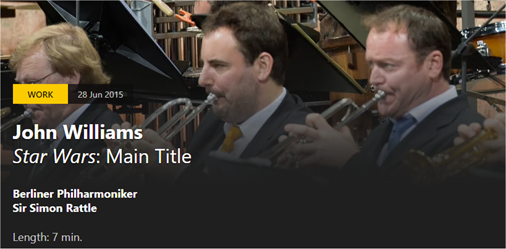
Figure 308: John Williams’ Star Wars: Main Title on the Berlin Philharmonic Digital Concert Hall. No mention of the contributions by Spencer, Holst or whomever arranged it for orchestra.
Of course, there are many points of view about works and attribution. Goehr observed that “prior to 1800, the work-concept did not regulate practice,” (Goehr 2002:114). She also pointed out that “implicit existence has become here essentially a matter of retroactive attribution,” so there isn’t a long institutional history of clear attribution among classical composers. (Goehr 2002:115). Benjamin warned that mechanical reproduction changed a work of art so that the “quality of its presence is always depreciated”. He also noted: “that which withers in the age of mechanical reproduction is the aura of the work of art.” (Benjamin 1935:4) This became especially acute as technology changed rapidly over the last 100 years or so, leading to problems in the attribution of individuals that contributed substantially to works, as exemplified in John Williams’ Star Wars and his quotations from canonical works and use of third party orchestrators without giving them attribution in later versions of his work. Plus, there were works from artists like Kinkade and Chihuly where you weren’t sure who actually created the work, with Becker raising the question, “how little of the core activity can a person do and still claim to be an artist? (Becker 1982:19)
What I can conclude is that if I buy a painting, I expect it to be painted by the person whose name is on the painting. If I buy a piece of artistic glass, I expect the glass to be made by the person who has purported to make it. If I listen to a piece of music or watch a movie, I expect that all of the people involved in making that music – the composer, the arranger, the composers whose works are quoted, the orchestrator and the performers – all receive attribution.
Works and Versions
The question arises of how to categorize musical works that may be very similar, especially transcriptions. The act of transcribing a work raises the question of whether a transcription is a version of the work on which it is based, or whether it is the same work.
Copyright Qualifications
This question arose in conjunction with a copyright application that I filed for works that I transcribed for chamber orchestra. The United States Copyright Office defines copyrightable music as follows in their document Copyright Registration for Musical Compositions: “Musical works include original compositions and original arrangements or other new versions of earlier compositions to which new copyrightable authorship has been added.” (United States Copyright Office: Circular 50)
In an exchange of emails with a registration specialist from the United States Copyright Office, I received the following question:
The application excludes “materials in the public domain.” The titles of your works all contain the word “transcribed,” which may refer to the creation of clean copies. It is unclear if you contributed copyrightable authorship to these works. In your response, please confirm if you have created new arrangements of these works (typically defined as adding new harmonies or instrumentation to existing works) or merely transcribed clean copies. Based on your response I will advise you further401
My response was as follows:
I have created new arrangements of these works. They have been significantly altered from the musical source material402.
Therefore, I believed that my works met the government requirement of being “new versions of earlier compositions to which new copyrightable authorship has been added.” (United States Copyright Office: Circular 50) They agreed, and as a result of this exchange I received a Certificate of Registration, Registration Number PAu 4-195-555, Dated August 01, 2023403.
Each of the works that I registered were legally considered new arrangements, at least according to the United States Federal Government. Therefore, copyright was obtained. See Figure 401.
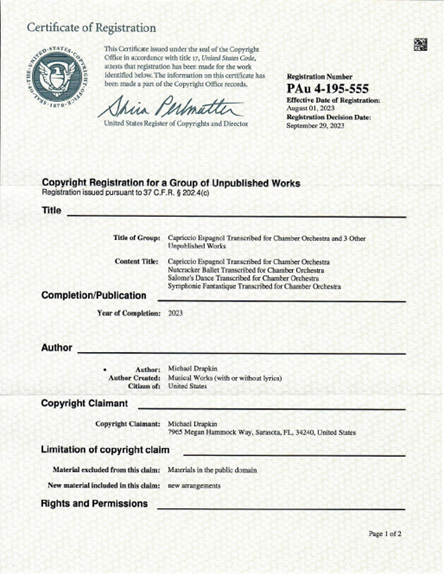
Figure 401: Copyright registration for four chamber orchestra transcriptions from the United States Copyright Office.
Versions Facilitated Through Technology
The next issue is the impact of technology on the question of whether a work is the same or a version. The emergence of computer music software opened the way for works to be more easily transcribed, while retaining the familiarity of their melodies, harmonies, and rhythms.
As an example of facilitation through technology, I take a work that I named A Klezmer Set that consisted of three traditional klezmer tunes. See Figure 402. My klezmer band Yiddish Cowboys performed these and I subsequently transcribed them for different kinds of ensembles.
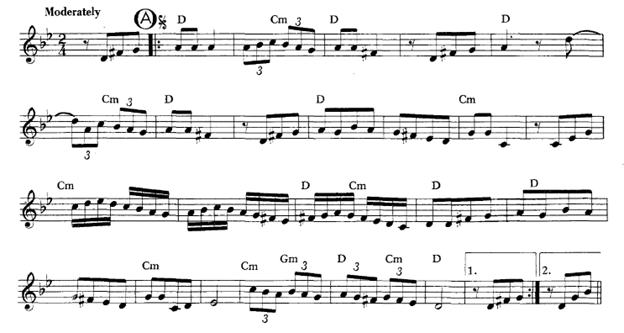
Figure 402: Song: Der Heiser Bulgar lead sheet, from A Klezmer Set.
“Der Heiser Bulgar” from A Klezmer Set (for klezmer band)404
Next I put it at the end of a concert band work I wrote, called Suite of Old Yiddish Melodies:
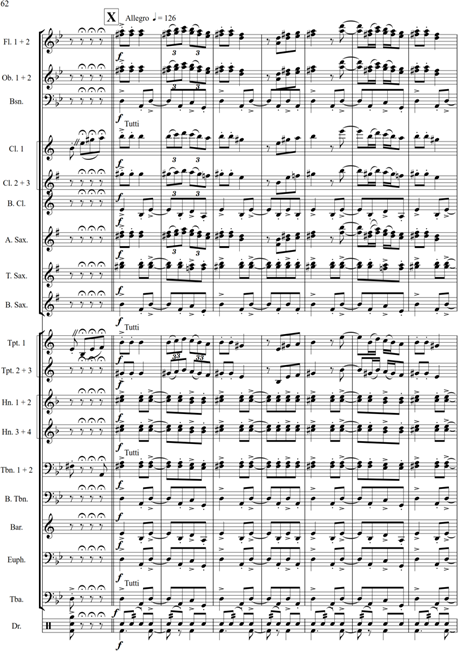
Figure 403: “Der Heiser Bulgar” in Suite of Old Yiddish Melodies (for concert band). Transcribed by the author405.
This version for concert band retains much of what is in the lead sheet in Figure 402. Similar to the Ship Of Theseus paradox and thought experiment, many of the “planks” in this version retain the harmony, melody, and rhythm that comprised the original lead sheet. The only difference is that it now consists of instrumentation for concert band. Unlike the Ship of Theseus, it is no longer an exact replica, but it does retain all of the fundamental components that make up the lead sheet.
This may be taken any number of iterations further. Here it is for chamber orchestra:
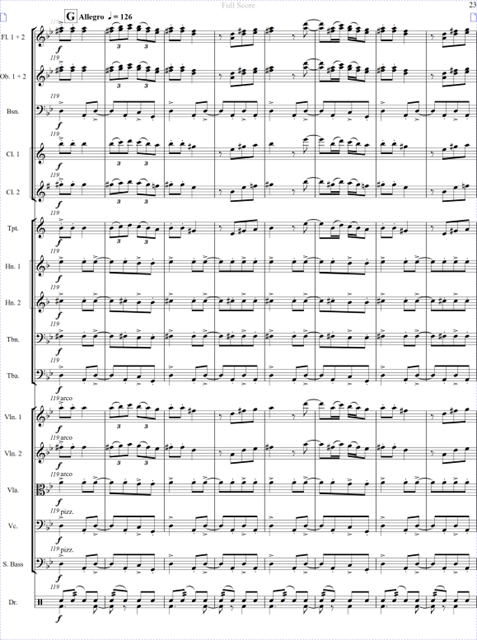
Figure 404: “Der Heiser Bulgar” from A Klezmer Set for Chamber Orchestra. Transcribed by the author406..
And for an even smaller chamber orchestra without a wind section:
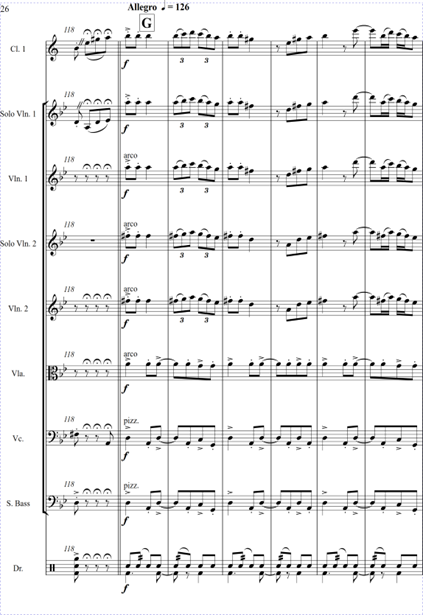
Figure 405: “Der Heiser Bulgar” from A Klezmer Set (for smaller chamber orchestra)407.
A Musical Schrödinger’s Cat Experiment
In these examples above, A Klezmer Set exists in four different states simultaneously, much like the paradoxical Schrödinger’s Cat physics thought experiment (Oxford Reference: Schrödinger’s Cat). In that iconic experiment, until you see the cat, you don’t know if it is dead or alive, so it exists in two different states simultaneously – alive and dead – as per quantum mechanics. A Klezmer Set also exists in four different states simultaneously408. But until you actually hear it, you don’t know which state/version it is in.
Were all of these versions of A Klezmer Set the same work? The first orchestration of A Klezmer Set for klezmer band that I used was performed with clarinet, accordion, bass and drums, and the music was notated as lead sheets consisting of the melodic line with chord symbols, as shown in Figure 402. The version for concert band was written in score format with the instrumentation of that of a full concert band consisting of winds, brass and percussion. The chamber orchestra version was also notated in score form with strings, winds, brass and percussion. The last chamber version – the smaller one – was scored only for solo clarinet, strings and percussion. I also contemplated transcribing this for clarinet and string quartet. I believe that these iterations of A Klezmer Set are different versions and therefore different works, even though they contain similar components between them, such as harmony, melody and structure. However, the orchestration is significantly different, which makes them different works. This is what the U.S. Copyright Office was looking for in order to grant copyright. Thanks to computers and notation software, it was a simple and quick exercise to orchestrate versions for different ensembles.
All of these iterations of Der Heiser Bulgar sound similar, but the orchestration is different on each one, therefore they are different versions of the lead sheet shown in Figure 402, and different works.
Composers Creating Different Versions of the Same Work
Finally, many composers created different versions of the same work, and I would argue that they can also be considered different works as they have different orchestrations and may be arranged and/or structured differently, even though they are based on the same musical materials409. Beethoven produced multiple versions of his Septet, which have separate opus numbers: Op. 20 and Op. 38. Similarly, Stravinsky produced two versions of L’Histoire du soldat (The Soldier’s Tale) (1918) – one for actor(s), dancers and instrumental septet, and the other, almost simultaneously written, for clarinet, violin and piano. Mozart wrote two versions of his Symphony No. 40 in G minor (K. 550) which is a gray area.
Kivy commented on the discussion of multiple versions of musical works, and in particular on the Mozart Symphony No. 40 with the following:
Most concertgoers will be familiar with Mozart’s Symphony No. 40 in G minor (K. 550); but perhaps few will know that it was originally written without clarinets: ‘Later Mozart replaced the two oboes by two clarinets, while two oboes were added with modified parts.’ Two works, or one? The fastidious metaphysician may, for perfectly sound philosophical reasons, want to answer “two.” But the number of Mozart’s symphonies still stands at forty-one (or forty and a half, since no. 37 is by Michael Haydn, with only the slow introduction to the first movement by Mozart). What musicians say, simply, is that there are two versions of the same work and leave it at that. But one thing they emphatically do not say (if one can be silent emphatically) is that there are two symphonies: two works.” (Kivy 1995: 131)
Both versions are catalogued under the same Köchel number (K. 550), and in fact the score edition published by Breitkopf & Härtel (1880) combines the two versions together into one score. See Figure 406 below. It also has the following footnote at the bottom of the first page of the score: “The Oboe and Clarinet parts printed in the two systems at the top were added later by Mozart to replace the Oboe part in the fourth system.” However, the Internationale Stiftung Mozarteum, Online Publications (2006) published these as two separate scores.
In this instance, it is as Kivy says in the quote above: two versions of the same work.
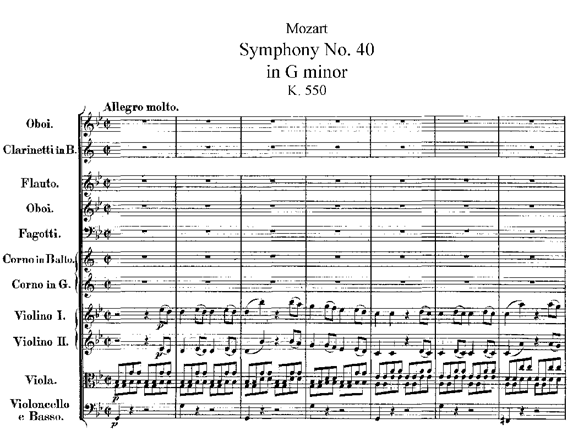
Figure 406: Mozart Symphony No. 40 in G minor, K. 550. Published by Breitkopf & Härtel (1880), combining both versions on one score..
When transcribing the Menuetto movement from Mozart’s Symphony No. 40, I chose the latter version that uses two clarinets as that orchestration was closer to that of the other works that I was intending on transcribing. Since Kivy avers that Mozart created the second version, then both versions were still works by Mozart. If I had transcribed the entire second version, then it would be yet another version. It would no longer be the same work as Mozart composed, but it would be a new work: Mozart: Symphony No. 40 transcribed by Michael Drapkin. But even though all three versions are based on the same Mozart symphony, they are still versions as they all have different orchestration. They are no longer the same work.
The screen capture below (Figure 407) is for performances of the Nutcracker Ballet in Venice Florida scheduled for premiere on December 8 and 9, 2023 and is an example of the versioning problem. (Venice Performing Arts Center 2023) The score being performed is my transcribed version of the Nutcracker Ballet, but the highlighted text says, “Set to Tchaikovsky’s magical score. They aren’t using Tchaikovsky’s score – they are using my score, which is different. Therefore, they are performing a different version of the Nutcracker and a separate work. This was corrected the following year to “Michael Drapkin’s transcription of Tchaikovsky’s magical score” after intervention by the Venice Symphony’s artistic director.
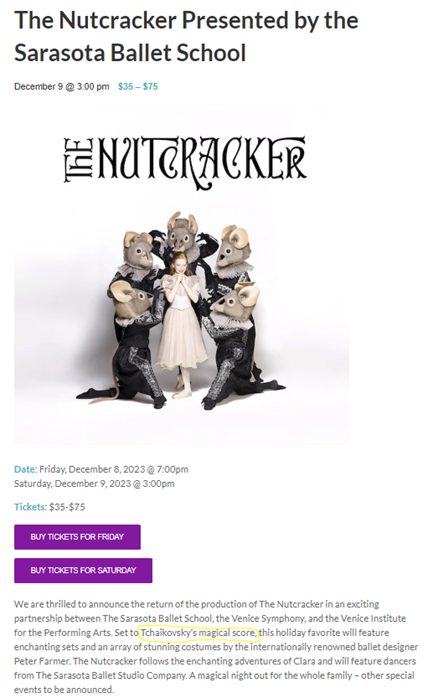
Figure 407: Nutcracker Ballet advertisement with score by Michael Drapkin based on Tchaikovsky’s work. Problematic text highlighted in yellow..
Summary
A work may exist as different versions, written by the composer or by others, arranged or transcribed. If it is based on musical material from another work, it can be considered a version of that work, but each would also be considered separate works. The key to this is whether the work is different from the original. For example, during the COVID pandemic, many orchestras chose to perform symphonic works by Schuman, Mozart and Beethoven because they use small wind sections, and they could also cut way back on the strings and maintain social distancing on the concert stage. But in that case, even though the orchestra was much smaller than modern orchestras, they were performing the same version and therefore the same work. As per the U.S. Patent office inquiry, the orchestration needs to be different, not just the number of strings.
However, there are some that argue against the idea of transcriptions; that it is unethical. This is the basis for the next section.
Purism and the Ethics of Transcription
The struggle against purpose in art is always a struggle against the moralizing tendency in art, against the subordination of art to morality (Nietzsche 1888: 24).
Does the transcription of a work offer the public something independently valuable, such that it comes to be judged on its own terms independently of reference to the original work? Or should it always be judged in relation to the original work? The advantage of this sort of indeterminacy — the advantage of there not always being a clear answer to this question — should be obvious to those who find it valuable and interesting to judge a given composition both as an independent work and as a transcription (Goehr 2002: 255).
This section examines the issues associated with purism in music with respect to transcribing music and the question of whether it is ethical to transcribe music at all.
Purism: When Transcription is “Ill Advised”
One of the biggest issues associated with transcribing canonical symphony orchestra works for the chamber orchestra was summed up in an email exchange I had with my colleague Michael Patrick Coyle:
One of the strengths of the Symphonie Fantastique is its orchestration, it is more than functional, it’s downright structural. Transcribing a piece of absolute music (e.g., Brahms String Quartets, Mendelssohn’s Lieder ohne Worte, Beethoven Bagatelles, Dvorak’s 8th, etc.604) can work, but with a piece as highly programmatic as the SF it is not just problematic, I think it’s ill advised….orchestration was developing as a critical aspect of composition by the middle Baroque. By the mid to late Romantic period it was as important as the music itself, particularly in programmatic works. As you know, in Wagner it is not just important, it is a character in the Music Dramas601!
Music in the 18th century transitioned away from being focused on the occasion and on the wants and desires of the sponsor whether it was ecclesiastical or aristocratic. Until the 19th century, music was freely borrowed from other composers or even among the compositions of the composers themselves. In the 19th century, new concepts began to apply to European composers, among these the rise of the concept of the “musical work” as well as copyright, plagiarism, publication, more accurate notation, and concert halls. Goehr related this new idea of the untouchability of musical works, and that they should not be changed by others:
The demand that one’s works be left alone was rationalized according to the romantic belief that the internal form and content of each such work was inextricably unified, or by the belief that works were specified in toto according to an underlying or transcendent truth. That a work’s determining idea was an expression of an individually inspired genius effectively meant that its content was necessarily elusive and not subject, therefore, to mundane description or change. That being so, the practical outcome was to instill fear in those who dared to touch a work, on the grounds that they would probably damage it irreparably and forever (Goehr 2002: 222).
This is likely the seed of the purism attributed to music works as an argument against making changes to existing works, as expressed above by Coyle.
Authenticity is Good, Everything Else is Bad
The challenge with purism is that it bases judgment on transcribed works like mine on their authenticity. Therefore, “purism” and “authenticity” not only go hand in hand but are interchangeable. My works are no longer authentic, therefore they are not good, as Kivy examines in his book Authenticities:
“Authentic,” then, has become or is close to becoming a synonym for “good,” while seeming to confer upon a performance some magical property that it did not have before. It is the musical version of the doctrine of the real presence (Kivy 1995: 1).
Kivy does not agree with this pronouncement, and neither do I. It ignores the underlying aesthetic qualities of the musical composition, or anything else for that matter. If you follow that requirement of authenticity, then works canonical to the symphony orchestra repertoire, such as the Ravel orchestration of Mussorgsky’s Pictures At An Exhibition are inauthentic (it was written for piano) and therefore bad. Nobody in the orchestra world would agree with this. Richard Taruskin took this even further in his essay The Limits of Authenticity: A Discussion:
The word needs either to be rescued from its current purveyors or to be dropped by those who would aspire to the values it properly signifies. A thicket of misperceptions has grown up around it as applied to musical performance, obstructing the view not only of the public and its appointed spokesmen, but of many practitioners, too (Taruskin 1984: 3).
The notion that my work in transcribing symphonic works could be arbitrarily dismissed because they were not authentic is unacceptable to me and is vigorously argued against throughout this discussion.
Public Acknowledgement
The concept of transcription or arrangement, orchestration, or anything else that can be done to pre-existing works has led to the expectation that “one publicly acknowledge that fact” when one makes a transcription of someone else’s work. (Goehr 2003: 223) This is certainly the case with the three major canonical symphonic works transcribed in their entirety for chamber orchestra, and that is overtly made clear on the cover of each score602. When Haydn directed his Austrian publisher, Artaria & Co. to request his lieder for publication at the end of the 1770s, he specified that they were not to “let anyone copy, sing, or in any way alter these Lieder before publication, because when they are ready I will sing them myself in the critical houses” (Robbins Landon 1959: 31).
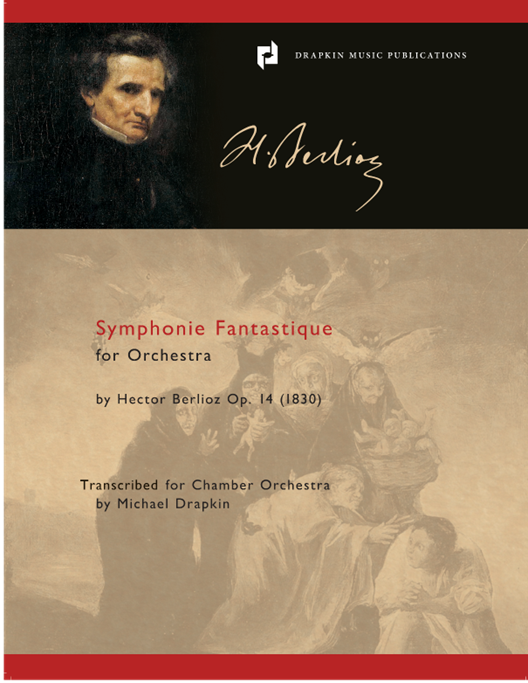
Figure 601: Score cover page to transcribed Berlioz: Symphonie Fantastique by the author.
Figure 601: Score cover page to transcribed Berlioz: Symphonie Fantastique by the author.
The Composer’s Intentions
One of the difficulties with “purism” is that “a composer’s intentions are not so easily determined,” unless they explicitly state what they want in their letters or other artifacts, as are the case with Haydn and with Tchaikovsky below.(Dipert 1980: 205) But we don’t necessarily know what their intentions were at the time – particularly in the case of orchestration. Kivy goes into detail on this issue in his chapter Authenticity as Intention. “The begged question is to the effect that the composer’s wishes, desires, hypotheses, instructions, and suggestions about performance always have the strength of commands.” (Kivy 1995: 11) Coyle is arguing that changing orchestration would break the structure of Symphonie Fantastique. After listening to the chamber orchestra recording that I made of the Berlioz, Coyle further commented “but, because it is so passed down and missing the kind of mass the piece calls for, it just ends up sounding like a bad performance of the Symphonie Fantastique. The posting is adequate, but it just lacks the proper color that Berlioz clearly called for603.” Coyle’s judgement as to what “Berlioz clearly called for” is an example of what Kivy warns about composer’s intentions: “The composer’s performance instructions, whether expressed or inferred, take on, implicitly, by our calling them performance intentions, the status of stentorian admonitions, no matter what the circumstances.” (Kivy 1995: 11)
As Theodore W. Adorno observes in his forthright essay Bach Defended Against his Devotees, “The only objective representation of music is one which shows itself to be adequate to the essence of its object.” (Adorno 1995:143) Adorno still rails that “the favorite argument of the purists is that all this should be left to the work itself.” (Adorno 1995:144) It does raise the issue of defining what are “essences” of the work, and the contradiction of pairing that with objectivity; since identifying the meaning of those essences are still based on an individual’s opinions as to what those are.
Unlike Coyle’s arguments about orchestration, just because we think a composer like Berlioz orchestrated well doesn’t tell us what sounds he heard in his head or whether he was “satisfied with the instruments and performers of his day.” (Dipert 1980: 209) For example, Berlioz orchestrated Symphonie Fantastique utilizing the ophicleide. In my transcription, it was supplanted by the tuba, which is now standard practice. Yet there is no mention of this fact in his comments about my transcription being “ill advised” with the exception of it being okay to replace the ophicleide with the tuba. When the tuba was invented, it overshadowed the ophicleide.” (WUOL 2015) In order to do a purist or authentic performance of Symphonie Fantastique, you would need to borrow one from a museum collection since there are few ophicleides physically in existence anymore. When we see that Symphonie Fantastique will be performed, it is assumed that you will hear the “Dies Irae” played by the tubas (and bassoons), which means that an orchestrational change has been made to the original score, which still lists “ophicleide” and not “tuba.” The point here is that purists can be “pure” when it suits them. According to Coyle, transcribing Symphonie Fantastique for ophicleide is permissible, but transcribing it for chamber orchestra is “ill advised.” Coyle’s argument against transcribing is that the orchestration is a key part of Berlioz’s work, therefore it is permissible to transcribe other works where he believes that not to be the case (“Brahms String Quartets, Mendelssohn’s Lieder ohne Worte, Beethoven Bagatelles, Dvorak’s 8th, etc.” ) but not Symphonie Fantastique. Dipert puts this rather bluntly:
Some readers might resent the implicit admission that sometimes a Mozart, a Bach, or a Beethoven did not know what he was doing. My claim is that actually we often have no way of knowing that they were aware of what they were doing in some respects (Dipert 1980: 213).
Dipert continues that “it is not at all obvious that he [Beethoven] was an expert judge of pianos and piano sounds,” given that Beethoven was going deaf later in life. It is difficult to know what these composers knew about the rapid changes that were going on in orchestration with the invention of new musical instruments, nor what they felt or cared about it. For example, the ophicleide was invented in 1817, but the first tubas appeared in 1830, and rapidly replaced it. Would Berlioz have used the tuba had it been around earlier? We have no way of knowing.
Dipert also makes the following point about musical “moral obligations” to long dead individuals:
Napoleon may be impressive, but one is unlikely to feel any moral obligation to his goal of the unification of Europe. Or, if by studying Napoleon, one realized for the first time the desirability of unifying Europe one feels no obligation to implement his exact plan for doing so…..actually upon reflection, it is clear that we have no more moral duty to a composer to perform a piece the way he intended than we had to Napoleon (Dipert 1980: 205).
Coyle expresses his values about what should or should not be transcribed – and in particular that I shouldn’t have transcribed Symphonie Fantastique – even though he is inconsistent about Berlioz’s Symphonie Fantastique orchestration with respect to the use of the original ophicleide versus the current practice of substituting it with tuba. Similarly, I published two volumes of the bass clarinet parts to canonical works that were written for bass clarinet in A. There is no such instrument used anymore, nor are they manufactured. So, I published the major repertoire pieces with the bass clarinet part transposed into Bb, which is the standard instrument used today. (Drapkin 2016) Should they not be transcribed for use by another instrument and instead retain the original orchestration605? There are several reasons for why a composer might write a part for bass clarinet in A606. The composer might like the slightly darker timbre of the instrument in A, to put the instrument into a different key from the Bb version, or to match the soprano clarinets if their part is also written for clarinet in A. We can make an educated guess as to the reason, but we can’t know why with 100% certainty, nor should that guide our decision making when considering a transposed part.
Dipert states that “we cannot simply assume that the piece was written for just this particular instrument and cannot profit by performance on another instrument.” (Dipert 1980: 217)
On the other hand, where I do agree with Coyle is his implication that Berlioz had an intention to orchestrate his Symphonie Fantastique the way he did, but we cannot know with 100% certainty what that intention was. In one case I was able to ask the composer what he thought of my transcription of his work. I received permission from the publisher to transcribe Frank Ticheli’s highly popular concert band work Blue Shades for woodwind quintet plus drums. (Ticheli 1998) After it was complete, I made a studio recording of my work and shared it with Ticheli. (Drapkin 2015) In an email, he responded, “Bravo to you for your fine work607.” If I was able to time travel and ask him, perhaps Berlioz might have liked my transcribed version of his work, or he might have used one of many florid French expletives. But given he is long dead we will never know.
Variations on a Theme of …
Even more common has been the practice of a composer writing a “Variations on a Theme by …..” work, of which there have been dozens. One of the more famous that has made its way into the symphony orchestra canon is Brahms’s Variations of a Theme by Haydn which appears in two versions – Op. 56a for orchestra which has been frequently performed, and the Op. 56b for two pianos. (Brahms 1873) Not only did Brahms create two versions of his Haydn Variations, but he appropriated the theme from another composer’s work, Haydn’s St. Anthony Chorale. Another is the Ancient Airs and Dances by Ottorino Respighi (1923), which is a set of three orchestral suites based on pieces for lute, archlute and viol written by Fabritio Caroso, Jean-Baptiste Besard, Bernardo Gianoncelli, an anonymous composer and an aria attributed to Marin Mersenne, reflecting Respighi’s interest in Italian music of the 16th, 17th and 18th centuries. A purist might say that it was wrong to create these compositions by taking material from other composer’s works, but these are examples of major composers doing just that. But just like the clear attribution that I made in the Figure 1 score cover to my transcribed Berlioz: Symphony Fantastique, both composers give clear attribution to the composers of the works that they used.
As Chua observes,
In reality, the timelessness of art is a delusion. Musical monuments decay. They exist in eternity only as long as the institutional discourse perpetuates itself as new; when the discourse exhausts itself, the aesthetic illusion is broken (Chua 1999: 243).
Transcribing these timeless monuments into a new format, such as chamber orchestra or a set of variations based on some other composer’s work, breathes new life into them and allows them to continue to live into eternity by bringing them to new audiences.
Chua further examined the Romantic philosophy of music and made the following observation of that viewpoint:
Despite the chaotic and infinite signification of instrumental music, the work can no longer undergo a process of mutation, for sealed in it are divine secrets that are encapsulated as microcosmic reflections of transcendental structures. Because the work is sacred, it is no longer open to improvisation in case the divine revelation is contaminated. Thus, spirit is not revealed by interpretation, but only by participation, which will expand the soul, but never the score. Unlike Baroque notation, the score is no longer the site of performance, but locates music outside time and action in an idealized realm where performance is no longer a prerequisite of a work’s existence. The score has become the spirit of the composer in the form of an absolute music, and is therefore more perfect than its performance, promising an imaginary music that the performer can only yearn to realize by being faithful to the notation.
In examining the ethics of taking a score and changing the realization of it, one can likely go back to this period in the evolution of the relationship between divinity and music. One can trace the desire to keep the score intact and unchanging and point to the 18th – 19th century as the beginning of thoughts about why an orchestral score should not be transcribed into some other form, since it was a divine revelation. Having a third party transcribe an already existing work not only violates that principle of being “faithful to the notation,” but also Hoffman’s idea of werktreue, or how we address the issue of the composer’s original intent608.
Do Overs
In some cases, I can see where this might make sense, this notion of keeping the work from being “contaminated,” particularly in the case where a new edition of a work is purported to improve on the original but does not. In the case of the John Philip Sousa march The Stars and Stripes Forever, which was composed in 1896, it has been republished for band as other editions of the work. I found this perplexing given Sousa’s stature as one of the great American march composers, and this work in particular, given its popularity and not ironically that he stated was divinely inspired, as per Chua above. (Sousa 1896) The implication is that these editions fix things that are wrong in Sousa’s march, resulting in a better version of the work609. This is in contrast to Mahler’s transcriptions of Beethoven and Schumann’s symphonic works for larger orchestra, and my transcriptions of symphonic works for chamber orchestra. Certainly, in my case, the goal wasn’t to fix things wrong in the originals, but to transcribe it and to be able to perform it in a different sized ensemble. I have also published several of Sousa’s more popular marches transcribed for two clarinets and bass clarinet. These were wholly new derivative works, not an edition of the same composition edited for use by the same size ensemble with the intention of replacing Sousa’s original. Editing and publishing an updated version of Rimsky-Korsakov’s Capriccio Espagnol for orchestra would seem audacious to me: Could I really do a better job than Rimsky-Korsakov and “correct” his composition? Instead, what I have done is to pay homage to the composers whose works I transcribed by making their works more accessible to new audiences while faithfully retaining the timbre of the original.
Transcription, Purity and Ratios
Another issue regarding purity takes place inside the orchestration of transcribed works and the ways that composers transcribed other composer’s works.
Mahler Transcriptions
Gustav Mahler did the opposite of me when I transcribed large symphonic works for chamber orchestra. He made the works he transcribed bigger. In early 1900 Mahler revised Schumann’s symphonies for the larger orchestra size of his time and of which he was composing for his symphonic works. As Veronica Mary Franke pointed out in her essay Mahler’s Reorchestration of Schumann’s ‘Spring’ Symphony, Op. 38: Background, Analysis, Intentions:
Certainly, Mahler did not rescore Schumann’s passages because he felt they had been “erroneously conceived or notated” or because they uncover “apparent deficiencies in orchestral technique,” as some writers have casually inferred (Siepmann 2003: 119, 133). He revised Schumann’s orchestral music in the light of the expanded techniques used in late romantic symphonies performed by large orchestras (Franke 2006: 81).
Franke pointed out that Mahler “seems to have had a special affection for the first symphony, for he conducted it on numerous occasions, the first time in 1895 at a subscription concert.” (Franke 2006: 81) Eric Jenson’s book Schumann pointed out that Schumann’s orchestration was a product of his time. In other words, he scored for an orchestra of a size that was more common in the first half of the 19th century. “What needs to be remembered is that the orchestra Schumann wrote for was about half the size of the orchestra of today.” (Jensen 2001: 204) Mahler transcribed Schumann’s symphonies to meet the size of the orchestras of his time, which had expanded greatly.
Franke went on to observe:
It would appear beyond any doubt that Schumann composed his symphony with a specific performing medium in mind – the Leipzig Gewandhaus orchestra, an ensemble comprising approximately forty-nine players, which, because it continued to play a repertory of eighteenth and early nineteenth century works, followed the structural pattern of the high-classical orchestra. In the decades after Schumann composed this work, orchestras expanded significantly, so that by the late nineteenth century symphony orchestras featured one hundred players (Franke 2006: 83).
Ratios and Balance
Franke pointed out that when Schumann’s ‘Spring’ symphony was first performed back in 1841, the woodwind to brass to string ratio was 1:1:3. In 1899, the ratio was 1:1:4 – significantly more strings, “a consequence of the burgeoning winds and their technological advances. It is such an expanded orchestra, coupled with concert halls possessing sizes, acoustics and seating plans unknown to Schumann, that Mahler would have had in mind when he amended Op. 38 to avoid prospective imbalances.” (Franke 2006: 84)
This is in line with the overall growth of the orchestra during the 19th century. Myriad percussion instruments as well as Eb clarinet, bass clarinet, English horn, various kinds of trumpets, valve horns, tubas, Wagner tubas, contrabassoon and tenor horn all added to the size of the orchestra, and as a result the number of strings had to be increased to balance the number of winds as is pointed out in the previous paragraph. When a symphonic work is transcribed and the number of winds are pared down, then the number of strings can also be reduced, and the listening experience, and particularly the balance between strings and winds can still be maintained.
In the transcriptions that I made in full for chamber orchestra, the ratios that I adopted when they were recorded by the Janáčkova Filharmonie Ostrava in December of 2021 in the Czech Republic included five woodwind, six brass and sixteen strings610. (Drapkin 2021) This ratio was roughly 1:1:3 – very similar to Schumann’s ratio as pointed out by Franke above. When I stood in the recording studio during rehearsal facing the orchestra and listened to the overall sound and balance of the orchestra without microphones, the strings were not at all overbalanced by the winds and percussion. To me it sounded like a regular symphony orchestra rendering of each piece, even though in the case of Richard Strauss’s Salome’s Dance, he specified sixty-two strings instead of the sixteen that we had in the Czech chamber orchestra recording sessions. While there is clearly a difference in the volume of a thirty-one piece orchestra (my transcription size), vs. a 108 piece orchestra (Strauss’s specification for the opera Salome), this was not apparent when I stood in the recording studio and listened to the orchestra rehearse611. In my opinion you could not tell the difference in size, and as my ear quickly accustomed itself to listening to the ensemble, any differences ceased to be present. My focus was on the music and not on the ensemble size, or balance.
Mahler also transcribed Beethoven symphonies (the complete nine), as well as selected Mozart, Schubert and Brucker symphonies. In Pieter Bogaert’s article Mahler’s Orchestral Arrangements, he stated that “The primary goal of these arrangements was to uncover the hidden potential of these masterworks by adapting them to the expanded possibilities of the modern Wagnerian orchestra.” (Bogaert 2019) In Franke’s observations about Mahler’s reorchestration of Schumann’s ‘Spring’ Symphony, Op. 38, she said that “Mahler neither adds to nor subtracts from the content of this symphony. He renders discreet alterations, additions and deletions to the score encompassing a limited number of bars at a time and involving a few instruments only, never the entire ensemble.” (Franke 2006: 82) This is very similar to my own thinking and goals with the symphony orchestra works when I transcribed them in the opposite direction: retaining the content of the symphony but rendering it for a different sized orchestra. In the case of Mahler, it appears that he wanted it to be performed in the context of what he considered to be a large symphony orchestra with the modern orchestration of his day. In my case, I wanted them to be performed in the context of a chamber orchestra. However, based on Franke’s comments, it appears as though Mahler was trying to achieve the same goal that I was striving for in resizing the orchestration: retaining the purity of the work that was transcribed by maintaining the ratios and resulting wind/string balance. From my perspective, this kind of purity was a good thing, and a transcription goal.
Major Composers Transcribing Major Composers
Berlioz also arranged other composer’s compositions, including works by Gluck, Schubert, Martini and others. (Fauquet 2005: 22a) Given that Berlioz transcribed works of other composers, then I followed his precedent when I transcribed a work written by Berlioz himself. In fact, my transcription was predated by Franz Liszt’s version, whose very first transcription was his Symphonie Fantastique for piano. (Liszt 1836) Liszt had the same goal that I did in my own transcribed version of Symphonie Fantastique: “I gave my work the title of Piano Score in order to make more obvious the intention to follow the orchestra step by step.” (Madrignac 1988: 42) Piano scores are very common today; there are piano scores for works ranging from orchestral to opera and is defined as “an arrangement for solo piano of any ensemble composition.” (Charlton 2001) Both Liszt and Berlioz transcribed many works into piano scores. Schumann himself liked Liszt’s piano score version of Symphonie Fantastique and gave it high praise: “Liszt worked on this reduction with so much ardor and enthusiasm that it should be considered an original work…in these conditions, the reduction for piano can be heard boldly alongside the orchestral performance itself.” (Szendy 2008: 61) It is noteworthy to see someone of Schumann’s stature praising an arrangement.
But it was also common during the time of Liszt and Berlioz for works to be modified by others. Szendy points out that some classical composers even expected their works to be significantly modified, especially in the case of operas and works created prior to 1800. He cites a letter by Donizetti where he entrusts Mercadante with “preparing a version of his opera Caterina Cornaro for Naples; he asks his on-site substitute purely and simply to appropriate the work:” (Szendy 2008: 42)
Correct all the mistakes in my score, keep a watchful eye on my opera, do anything you deem useful with it—in the strongest sense of the word: add to the instrumentation, rewrite the instrumentation, lighten it, shorten, lengthen, transpose, in short: make it your own work (Walter 1997: 232).
Szendy cites Liszt’s words in the preface to his transcriptions of Beethoven Symphonies: “I will be satisfied if I have accomplished the task of an intelligent engraver, the conscientious translator, who grasps the spirit of a work along with the letter.” (Szendy 2008: 47-48) And regarding Liszt’s piano version of Symphonie Fantastique, he said, “I tried, as if it were a matter of translating a sacred text, to carry over to piano, not only the musical framework of the symphony, but also the effects and the details.” (Pictet 1991: III) This is the same ardor that I felt when I was transcribing Strauss, Rimsky-Korsakov and Berlioz for chamber orchestra.
Specters and Transcription
Marcel Cobussen’s dissertation Deconstruction in Music also reflected on this issue. (Cobussen 2002) In particular, he examined Gerd Zacher’s Die Kunst einer Fuge (Art of a Fugue). (Zacher 1990) He considered the title “Specter of Bach” and made the revealing comment: “Incidentally, how appropriate is it to speak of a specter coming back? Something comes back, only now as a specter, in other words, as something different than itself, than what it used to be.” Perhaps the act of transcription creates specters of these works since they are different than they “used to be.”
While I identify my transcribed works as “specters” that are different from the original, this still meshes with the observation I made when listening to my transcribed works being rehearsed by the Janáčkova Filharmonie Ostrava. They sounded very similar to the original orchestration. However, in a later Messenger exchange with Coyle, after I sent him a copy of the audio of the performance of my Berlioz transcription, he said, “I appreciate your effort, but I just don’t like the sound612.” Hence, we have a difference of opinion as to how it sounds, but we both agree that it is different than the original score.
Szendy makes the observation that transcription is a transcriber’s “listening. Their hearing of a work.” (Szendy 2008: 36) These transcriptions are my hearings of these works, and are therefore different from the original, or “specters” according to Cobussen, even though they sound to me (and not to Coyle) like the original. But they are not the original, even though I was looking to have them sound the same – to the best of my ability – as part of my effort to preserve this work of the classical music canon by writing them for chamber orchestra.
Conclusions
Interestingly, when I started typing this paragraph, I misspelled “specter” as “spectre.” Microsoft Word dutifully suggested a correction using the definitions “threat,” “ghost” and “menace” for the word spectre. Whether or not this was an intentional Freudian slip, this is the issue with purists – their desire for purism vs. change, which they see as a threat or menace, just like the music copyist that saw notation software as a threat to their livelihood. I personally see change as the “essential process of all existence” (to quote Mr. Spock from Star Trek). (Star Trek 1966) Becker agreed: “Though standardized, conventions are seldom rigid and unchanging. They do not specify an inviolate set of rules everyone must refer to in settling questions of what to do.” (Becker 1982: 31) In spite of the purists that want to constrain music under the guise of “authenticity,” I believe that transcribing has made these works better for the long term goal of preserving classical music.
On Being Faithful
In examining the ethics and aesthetics of transcribing the canonical symphonic works of classical music, the issue of “being faithful” to the original works merits some examination, even though it is the close cousin of Purism and the Ethics of Transcription examined in the previous section. The notion of being faithful evokes a kind of contractual relationship between someone or something and the original work, whether it is how one chooses to perform a piece or how or if one decides to transcribe it. Goehr described the relationship between performances of works and how they are presented as follows:
Performances present works to us by adhering as closely as possible to the relevant scores. Our aesthetic appreciation of works is mediated through our experiences of performances and scores. One and the same work is shown to us in better and worse ways, in more or less accurate and exciting ways, through the qualitatively distinct performances we hear and the scores we read. (Goehr 2002: 3)
There can be a wide variety of ways in which a work can be presented – from a performance with unusual tempi or presented in a transcribed chamber orchestra version. Kivy draws an “analogy between performers and arrangers, performing and arranging, performances and arrangements.” (Kivy 1995: 49) Therefore, many of the issues revolving around performing and transcribing track back to the same issue of being faithful. Was the performance faithful? Were my transcribed works faithful?
Value Judgements
The difficulty is that whether or not one is faithful is a value judgement that likely varies from one person to the next. I may think that my transcribed orchestra works are highly “faithful” and someone else may think that they are an abomination. It is a very gray area. The transcriptions that I have done could be considered as another of the “more or less accurate and exciting ways” – as per Goehr above – of interpreting the original work. Plus, it raises a dichotomy. Which is more faithful to the work? A bad symphonic performance of Berlioz’s Symphonie Fantastique performed by amateur musicians, or an excellent performance of the same work performed by a professional chamber orchestra? This is obviously a subjective question – perhaps a purist or the faithful would prefer to suffer through a mediocre performance of the original score over an excellent performance of a transcribed version, although it is more likely that they would attend neither. But perhaps it can be construed that “being faithful” is to preserve the works that one believes to be meritorious, whether through performances or through transcribed versions, and this is one of the major theses presented here. Some examples follow.
Goehr makes the point that “only someone with the requisite amount of skill, training, and knowledge could with any seriousness intend to perform a musical work.” (Goehr 2002: 65) Thus, a performance I attended of Strauss’s Ein Heldenleben by a community orchestra – complete with eight French Horns – could not be considered faithful according to Goehr, even though the orchestra did get through it without collapsing. On the other hand, the conductor and musicians that performed had likely done so for the sheer joy of performing Richard Strauss’s music. In that sense it could be construed that they were being faithful to their love of Strauss by performing his music, even if the result wasn’t a professional-level performance.
Similarly, I was asked to guest perform as principal clarinetist with the Austin Youth Orchestra in a performance of the first movement of Beethoven’s Symphony No. 6 “Pastoral” Op. 68701. Was it a “serious” performance? The winds were mostly ringers (including me), but the strings were at high school level.
Beethoven: Symphony No. 6, First Movement by the Austin Youth Orchestra
Was that a “serious” rendering of Beethoven’s music? Was it being faithful to Beethoven? It could be interpreted that having young high school players perform Beethoven indoctrinates them to Beethoven, thus being faithful to his music and allowing those young musicians the opportunity to learn and experience his masterworks. Indeed, with many of them, it could be their first exposure to Beethoven’s music. In that situation, given they are at the high school level, they aren’t expected to have the “requisite skill, training and knowledge” at this point in their musical educations. But having performed with those young people, I can affirm that they were quite serious in their performance endeavor.
Another gradation of being faithful is the example of what came to be known as The Drapkin Reading Orchestra when I was a student at the Eastman School of Music. Starting in the second semester of my first year, I started organizing weekly readings of large orchestral works without a string section, as it was too difficult to get string players to participate. This was essentially an orchestra wind section. This ran for three and a half years thanks to the rich ensemble library at Eastman with sets of music to the classical music canon, plus I made deals with the Rochester Philharmonic’s librarian that when they rented music, they would let us read it before it went back, thus giving us great access to the scores and parts to the canon of symphony orchestra works.
The orchestrations of the works that we read were sufficiently lush to engender a good orchestral ensemble experience. But this was not the original orchestration, yet there was no question of people identifying when “Drapkin’s Readers” were playing, such as when we read works like Strauss’s Also Sprach Zarathustra, Op. 30 due to how loud we were. While this did not explicitly qualify as performance, these readings did engender valuable performance experience with the large symphonic works we read through. Therefore, it could be construed that this activity was faithful to the canon of symphony orchestra works, even though these were just readings with an incomplete orchestra, and not actual performances. Through this experience, we gained valuable familiarity with these great works, which we would not otherwise have had, even by reading them with incomplete instrumentation.
Pictures
Another example of being faithful that bears examination looks at three examples of orchestrating the same work by different composers702. Pictures at an Exhibition was written in 1874 by Russian composer Modest Mussorgsky (1839 – 1881). Mussorgsky’s piano work depicts his visit to the memorial exhibition of artist Viktor Hartmann (1834 – 1873), which featured four hundred of his paintings. Each of Mussorgsky’s ten movements (with five recurring promenades) exemplify one of Hartmann’s artworks. Versions of this work were scored not only for orchestra, but also for concert band and other various sized ensembles. There have been 61 orchestra versions, 37 band versions and 38 other ensembles of all or parts of this work. (IMSLP: web)

Figure 701: Mussorgsky’s first four bars from Pictures at an Exhibition (piano)
Audio: Figure 701 – Mussorgsky: Pictures at an Exhibition, For Piano (Bertoglio 2012: web)
Given that this work was written for piano, purists may contend that the dozens of arrangements and orchestrations that have been created break faith with the original, since it was written for piano and was changed by others. However, this issue is moot, because of the sheer number of works that have been created. Despite the number and diversity of new versions, the version written by Mussorgsky for piano continues to be performed. This volume of versions based on Mussorgsky’s work indicates enormous interest in his piano work.
The Ravel Version
One such orchestration of Mussorgsky’s work – Maurice Ravel’s version – became an accepted part of the canon of symphony orchestra works and is performed regularly. Ravel (1875 – 1937) took these movements and promenades and orchestrated them for full orchestra in 1922. His version remained faithful to the subject of each movement, depicting each painting with his lush orchestration, thereby creating a masterpiece for the symphony orchestra not only among orchestrated piano works or original orchestral works, but among all the orchestral works of the classical music canon. Ravel’s orchestration is a remarkable blend of orchestral colors flowing in and out to create effects that move seamlessly from one musical gesture to another. While others have orchestrated Pictures at an Exhibition, none has come close to the popularity of this orchestration. Anecdotally, when the name “Pictures at an Exhibition” is mentioned among orchestra musicians, the assumption is that one is referring to Ravel’s version.
The Tomita Version
Another example and a much different orchestration was made by Isao Tomita (1932 – 2016). He was a Japanese composer and an early pioneer in electronic music composition using Moog synthesizers and analog sequencers, using them extensively in the early 1970s to score electronic renditions of classical works, including Stravinsky’s Firebird, Holst’s Planets and music of Debussy. In 1976 he composed an electronic music version of Mussorgsky’s Pictures at an Exhibition.
Tomita’s Gnomus movement follows the structure of the original piano work but renders it with a variety of synthesized sounds, wave forms, and stutters.

Figure 702: Tomita Gnomus – Poco Meno Mosso (piano score)
Audio: Figure 702 – Tomita Gnomus Theremin (You Tube) (Joy-Kurukulla 2012: web)
While Tomita’s Pictures might have been noteworthy for its innovation value at the time in which it was composed, he focused on showing the capabilities of his synthesizers and technology to the detriment of the composition, rather than showing how his technology could artistically enhance Mussorgsky’s piano work. In this sense, I do not believe that Tomita was faithful to Mussorgsky’s composition.
David Halderman summarizes Tomita’s Pictures:
Pictures clangs, pings, hammers, and thunks its way through Mussorgsky’s symphony, Tomita’s choice of tones becoming more harsh, metallic, and often grating. Moments of grandeur remain, mostly in the form of reverb-drenched Mellotron choirs, but Pictures mostly just seems anxious to impress. (Haldeman 2021)
The ELP Version
A third and final example is the version of Pictures at an Exhibition (1971) by Emerson, Lake and Palmer (ELP). ELP was an English rock band that was formed in 1970703. They were highly successful, had nine gold record albums and sold an estimated forty-eight million records worldwide. (Savage 2016: web)
The band had an affinity for and derived inspiration from classical music, producing rock-style songs based on works by Janacek, Copland, Ginastera, Prokofiev, Mussorgsky, J.S. Bach and others. They also pioneered the use of polyphonic synthesizers and other methods of creating electronic sounds, which they used in their songs.
While their version of Mussorgsky’s work is very different from the Ravel and Tomita orchestrations discussed above, it is remarkable for a number of reasons. There were some rock bands that had already used classical music for the basis or inspiration for their popular songs, including the Beatles song Blackbird (Bach’s Bourrée in E) and the Supremes song How Gentle is the Rain (Bach’s Minuet in G), but ELP used classical music extensively. They also performed these songs with only three players (keyboard, guitar/vocals, drums), they were all young (in their mid to early twenty’s), their album was quite popular, and they performed it using a rock style704.
Having grown up in the classical music educational system, I am not a big rock music aficionado. However, I also believe that beauty in music can originate from any vector. ELP faithfully captures the simple beauty of Mussorgsky’s Promenade.

Figure 703: Greg Lake singing the Promenade (piano score)
Audio: Figure 703 – Greg Lake singing the Promenade (YouTube) (Mercury 2011: web)
In addition to marveling at ELP’s rendition of Mussorgsky’s Pictures at an Exhibition in the stylistic and often driving language of 70s rock music, I can’t help but be stunned at the simple unadorned beauty of Greg Lake singing the Promenade. Of all the renderings of Pictures at an Exhibition presented here, this faithful version is one of my favorites.
Last Seriousness
One last example of this issue of Goehr’s “seriousness” was the case of the Mid-Texas Symphony, a regional orchestra located in the Seguin/New Braunfels, Texas area. I was called by an acquaintance in 2006 shortly after we moved to Austin. Her dilemma was that their orchestra only had enough funds for one rehearsal and a dress rehearsal to prepare for a concert, and she could not find a bass clarinetist in Central Texas that could walk in and perform Strauss’s technically difficult tone poem Till Eulenspiegels lustige Streich with so little rehearsal. I already knew the bass clarinet part to Till Eulenspiegel thanks to the Drapkin Reading Orchestra, and I was able to walk in, read the part down and perform one of my favorite Strauss tone poems. After the performance, the conductor – David Mairs – offered me the position for life, and I performed with them for 15 years until I moved out of the Texas area. (HeBu Musikverlag GmbH: web)
It is very difficult to play a perfect performance under any circumstance, and it is certainly more challenging when you have limited rehearsal time. Are you not being faithful to the music when you have insufficient preparation?
Fortunately, Goehr resolved this issue with some practicality:
Works are thought to be the exactly specified products of composers. A composer’s decision regarding the specification of a work’s structural (and as far as possible its aesthetic) properties is generally respected. Still, performances are not expected to be perfect (even though performers strive to make them so), because their imperfections can be judged and even ignored given the perfect, determinate, and idealized conception listeners have of the work itself. (Goehr 2002: 42)
When I started writing transcriptions of classical music works in college for trio, I had a couple of motivations. The first was practical. My trio was hired to play at a wedding, and they wanted Bach’s Jesu Joy of Man’s Desiring for the processional segment of the ceremony, so I made a transcription of that piece for trio. The second was that I liked the timbre and sparing size of a trio. Later on in my career, arranging opera arias also gave me the opportunity to continue to perform works that I just performed without having to engage an entire opera company. I still strived to be faithful to the music that I was transcribing, even though I was reducing a work from full opera company – orchestra, chorus, soloists – down to two clarinets and bass clarinet. Here is an example:
Mozart: Overture to the Magic Flute, K. 620, transcribed by Michael Drapkin
In transcribing symphonic works for chamber orchestra, the challenge was to reduce them in physical size while maintaining their resemblance to the original work – this constituted the challenge of being faithful for me, and I expected to be judged by how well I did this. If I invite an audience to hear a performance of my transcribed works, I am going to tell them that what they are about to hear is a work that I transcribed. Assuming they are familiar with the piece I transcribed, they are going to listen to it and judge my work by how well they believe that I was faithful to the work that was transcribed.
Roman Ingarden makes a similar point about the resemblance of performances to the original score in his book The Work of Music and the Problem of its Identity, and in this case it is applied to a performance of one of my transcribed works:
… the performances resemble the particular work, and the more they resemble it the “better” they are. The performance of a musical work reveals it to us in its characteristics and in the whole sequence of its parts. Finally, the work is totally different from its score. It is mainly or wholly a sounding work, while the notation of the score is simply a defined arrangement, usually of graphic signs. (Ingarden 1986: 1)
Where the Transcriber Fits In
This raises the issue of how the transcriber of symphonic works fits into the continuum of what constitutes a musical work, and whether they are being faithful. The composer and performer are well-known to have a symbiotic relationship: the composer needs musicians to perform their works, and musicians need composers to write works for them to perform. The composer’s works and the performers playing them are jointly judged by the performance of the work. When both are great, then the performance of a work is considered great, although in the case of the canon, there is already consensus on what are considered great works, so in those cases it is the performers who are mostly being judged. Kivy devotes an entire chapter to the idea of “personal authenticity” with respect to the performance aspect of a piece of music, which treads closely to the issues I was grappling with regarding being faithful to the original work. (Kivy 1995: 108) But it does not meet the need of understanding where the transcriber fits in, because what the transcriber creates occupies a special place that sits between the performance and the original composition.
When I transcribed orchestral works for chamber orchestra, the goal that I set for myself was to capture what I believed to be what makes those great works without diminishing them when creating a derivative work. Kivy observes, “I must place a musical interpretation on it – opine what is musically happening in it; know how it goes.” (Kivy 1995: 118) What is interesting is that he is referring to what a performer does in interpreting a work. It is also the same thing that the transcriber does: identify the work’s “aesthetically important properties” and see if they can be interpreted by the transcriber into a different orchestration. (Kivy 1995: 118) From the perspective of the transcriber, these are enumerated in the techniques that I developed in the Extreme Transcription book, which were applied across three different complete works with different orchestrations from different composers from three different nationalities. These techniques – to the best of my ability – allow me as a transcriber to be faithful to the works that I transcribe.
This is not physically possible to do with every canonical work, and this is discussed in the Extreme Transcription book. But when I believe that it can be done successfully, which was the case with the three works that I transcribed in full, then my goal is to capture my perception of the original work and hopefully expertly and competently transform it from the original symphony orchestra format to chamber orchestra format without those characteristics being lost through the use of my Extreme Transcription techniques705. That is also my way of being faithful to the original work.
Other Composers
It is also worth noting some examples of composers that used material from other works and applied it in different ways, and they are certainly not examples of transcription.
Dieter Schnebel, in his fascinating recording Re-Visionen, took this in a much different direction from what I set out to do, but also based his material on the music of classical composers. (Schnebel 1998: CD) In his recording, he took existing works and changed the orchestration and other aspects of the work in fascinating ways. His goal was to “carve out its perhaps still undiscovered possibilities,” and look for “untapped potential” that he justified by questioning how the original music was shaped – from ambiguities in flow, to articulation, instrument selection, percussion – even choice of concert hall type. Was he being faithful? Yes, but his way of being faithful was his stated goal to expand upon the works on which he based his material.
The group The Piano Guys did something in a different direction from Schnebel with different goals in their five minute piece/video called Beethoven’s 5 Secrets. They combined a highly popular song with over one quarter billion views on YouTube called Secrets by the band OneRepublic that featured a cello obbligato, with tunes from the four movements of Beethoven’s 5th Symphony Op. 67 and garnered 145 million views on YouTube. (OneRepublic 2010: web) Their goal was “inviting people to classical music and inspiring young musicians.” (The Piano Guys 2012: web) The Piano Guys were faithful to classical music by using their piece/video to bridge the gap between popular music and Beethoven.
Yet another example was the remix competition that the Brooklyn Philharmonic held in 2011 using the third movement of the Beethoven 3rd “Eroica” Symphony Op. 55. This program tied together the Brooklyn Phil’s contemporary community-based model with its early history, as the Beethoven Eroica Symphony was performed on the orchestra’s first concert in 1857. This is a notable example of crossover between the traditional classical music canon and edgy contemporary remixing, and it attracted a lot of attention and participation by the non-classical music community. The final winner was DJ Eddie Marz. His Beethoven remix was arranged for orchestra by composer 2012 Pulitzer Prize finalist and Juilliard composition faculty member Andrew Norman and was performed by the Brooklyn Philharmonic. (Norman: web) While the finished remix product was much different than Beethoven’s composition, it is also faithful to classical music by making connections between new audiences and classical repertoire, as well as for bridging communities with music of the canon. Here is the remix:
Ironically, I had some similar goals as Schnebel and The Piano Guys even though the final products were much different. Schnebel arrived at a much different interpretation of these recognizable works, including those of Bach, Webern, Beethoven, Mozart and others. The Piano Guys wanted to inspire young musicians and invite people to classical music. My goal was to look for the “untapped potential” for orchestras and the classical music canon by interpreting them into a different format and sharing their magical beauty by making them available for chamber orchestra, and as a result to be able to share them with a wider audience.
This is much different than early synthesized albums like Hans Wurman’s 1970 album The Moog Strikes Bach, which transcribed and performed classical works on the Moog synthesizer, which in my opinion merely capitalized on the novelty of the newly emerging synthesizers and their technology. This was also the case with Tomita above, therefore I do not believe that Tomita or Wurman were faithful to the classical music they used. (Wurman 1970: LP) This was in contrast to the use of synthesizers and classical music by rock band Emerson, Lake and Palmer, which used both to create a new musical work of art, while remaining faithful to Mussorgsky’s work.
Conclusion
In light of all these considerations, “being faithful” emerges not as a rigid prescription for exact duplication of a composer’s notated intentions but rather as an evolving, context-dependent interpretive responsibility. Whether as performers striving to honor a work’s essential spirit, as transcribers reimagining orchestral pieces for smaller ensembles, or as innovators fusing classical sources with popular, electronic, or rock influences, fidelity demands serious engagement with a composition’s underlying aesthetic and expressive properties. Goehr’s insistence on performers possessing the requisite skill and seriousness need not prohibit less formal or more experimental interpretations; instead, it points to the manifold ways one can sincerely approach a work while acknowledging inevitable limitations and imperfections. Ingarden’s observation that performances “resemble” a work and that faithfulness depends on capturing what is “aesthetically important” underscores this dynamism: there is no single measure for fidelity, but rather a spectrum of interpretive acts that remain aligned to—or depart from—core musical values.
From Ravel’s beloved orchestrations to ELP’s inventive rock rendition, from youth orchestras wrestling with canonical masterpieces to Schnebel’s avant-garde expansions, each manifestation grapples with how best to preserve or illuminate the essence of a musical work. Even those ventures that seem opportunistic or purely novel—like certain synthesized albums—highlight the critical judgment required of artists and audiences alike in deciding whether a transformation truly “carves out undiscovered possibilities” or simply trades on the allure of familiar music. Ultimately, the goal of transcription (and reinterpretation at large) is not to mimic the original slavishly, but to balance respect for the composer’s vision with fresh insights that may nurture a deeper love and understanding of these works. By applying methods such as Extreme Transcription, transcribers can ensure that new formats, ensembles, and audiences gain access to the richness of the classical canon without sacrificing the music’s fundamental character. In this way, we remain faithful both to the past and to the evolving life of these remarkable compositions.
References
Adorno, Theodore W. (1995), Bach defended against his devotees, Prisms, MIT Press Cambridge
Adorno, Theodor W. (1988) trans. Jimenez, Marc, On the Fetish-Character in Music and the Regression of Listening. InHarmoniques Paris: Ircam Bourgois, Originally appearing in Zeitschrift fur Sozialforschung Vol. VII (1938)
Apel, Willi (1997), The History of Keyboard Music to 1700, Indiana University Press, translated by Hans Tischler, p. 9
Extreme Programming (XP). AgileAlliance xb5.com/f19
What is the Plan-Do-Check-Act (PDCA) cycle? ASQ.org Adapted from “The Quality Toolbox, Second Edition” ASQ Quality Press xb5.com/f22
Barone, Joshua (September 14, 2017), Hear the Music That Inspired Star Wars. The New York Times xb5.com/f137
Bateson, Gregory (1971), A Re-examination of Bateson’s Rule. Prepared under Career Development Award (MH-21, 931-02) of the National Institute of Mental Health, This paper is Contribution No. 25 of the Oceanic Institute, Hawaii.
Baumol, William J., and Bowen, William G (1966), Performing Arts, The Economic Dilemma: a study of problems common to theater, opera, music, and dance. M.I.T. Press
Bazemore, Michael, The Aesthetics of Classical Music. Internet Encyclopedia of Philosophy xb5.com/f128
Becker, Howard S. (1982), Art Worlds. University of California Press, Berkeley – Los Angeles – London
Benjamin, Walter (1935), edited by Hannah Arendt, translated by Harry Zohn, The Work of Art in the Age of Mechanical Reproduction. Illuminations, New York: Schocken Books
Benson, Bruce Ellis (2003), The Improvisation of Musical Dialogue, A Phenomenology of Music. Cambridge University Press, New York
Bertoglio, Chiara (piano) (2012), Pictures at an Exhibition, Complete Performance, IMSLP.org Copyright Creative Commons Attribution 3.0. xb5.com/f157
Bogaert, Pieter (April 3, 2019), Mahler’s Orchestral Arrangements, pieterbogaert.com,xb5.com/f151
Brahms, Johannes (1873), Variations on a Theme of Haydn, Op. 56a for orchestra, and Op. 56b for two pianos.
Buschel, Bruce (1987), Angry Young Man with a Horn. Gentleman’s Quarterly
Charlton, David and Kathryn Whitney (2001), Score(i) (Fr. partition; Ger. Partitur; It. partitura), Grove Music Online xb5.com/f153
Chicago Symphony (1990), Holst The Planets – Mars, Bringer of War, YouTube.com xb5.com/f136
Chicago Symphony (1994), Le Sacre du Printemps. Chicago Symphony Orchestra Barenboim, YouTube.com xb5.com/f135
Chicago Symphony (1990), Mussorgsky Pictures at an Exhibition + Encore Solti Chicago Symphony Orchestra 1990 Movie Live, YouTube.com xb5.com/f196
Chihuly, Dale, LIFE One Man. Many Stories, Chihuly.com xb5.com/f140
Chua, Daniel (1999) Absolute Music and the Construction of Meaning (New Perspectives in Music History and Criticism. Cambridge University Press
Cobussen, Marcel (October 17, 2021), Aesthetics Chapter, email
Cobussen, Marcel (2002), Deconstruction in Music, doctoral dissertation website. xb5.com/f154
Cobussen, Marcel and Nielsen, Nanette (2012), Music and Ethics. Ashgate Publishing Company
Cohen, Rhonda et. al. (October 18, 2018), Defining Extreme Sport: Conceptions and Misconceptions. Frontiers in Psychology xb5.com/f21
Conrad, Andrew (November 18, 2019), What Exactly Is Agile? A Definition of Agile Project Management. Capterra, xb5.com/f20
Connor, Tom, (2020), The Ship of Theseus medium.com xb5.com/f180
Coyle, Michael Patrick (November 14, 2021), Re: Berlioz, email
Coyle, Michael Patrick (April 13, 2022), Messenger text message.
David, Hans T. and Mendel, Arthur (eds.) (1966), The Bach Reader: A Life of Johann Sebastian Bach in Letters and Documents. Revised Edition, W.W. Norton & Co. Inc.
De Curzon, Henry (trans.) (1979), Schumann, ‘H. Berlioz, “Symphonie fantastique” (Op. 14),’ in Sur les musiciens, Paris: Stock
DeVries, John M. (2012), The Nutcracker Ballet, Orchestrated, Edited and Arranged for the smaller orchestra by John M. DeVries, Jonra Music xb5.com/f131
Dipert, Randall R. (1980), The Composer’s Intentions: An Examination of their Relevance for Performance, Oxford University Press, The Musical Quarterly, Vol. 66, No. 2
Drapkin, Michael (2019), A Klezmer Set, for Orchestra. Youtube.com xb5.com/f18
Drapkin, Michael (2015), Blue Shades, for Woodwind Quintet + Drums, YouTube.com xb5.com/f149
Drapkin, Michael (1978 – 2020), Compositions: Concert Band. Drapkin.net xb5.com/f16
Drapkin, Michael (1978 – 2020), Compositions – Woodwind Quintet. Drapkin.net xb5.com/f17
Drapkin, Michael (1978-2020), Compositions. Drapkin.net xb5.com/f14
Drapkin, Michael (May 10, 2020) Ein Heldenleben Prelude: Four Bass Clarinets and Contrabass Clarinet, Youtube.com xb5.com/f15
Drapkin, Michael (December 10, 2021), Recording Sessions. Janček Philharmonic Ostrava
Drapkin, Michael (2013), The Rise of the Industrial Clarinetist. The Clarinet and reposted by Polyphonic.org
Drapkin, Michael (1995) OS/2 Warp Presentation Manager Mentor: Foundations of PM Programming. Van Nostrand Reinhold (now John Wiley and Sons.)
Drapkin, Michael (1978 – 2020), Transcriptions for Two Clarinet and Bass Clarinet, xb5.com/f3
Drapkin, Michael (2016), Transposed Orchestra Parts for the Bass Clarinet, Northeastern Music Publications, Volumes Four and Five
Drapkin, Michael (2016), Trios for Two Clarinets and Bass Clarinet, Drapkin Music Publications, xb5.com/f4
Drapkin, Michael, Yiddish Cowboys xb5.com/2
Editors of Encyclopaedia Britannica (1998), Easley Blackwood – American composer. Britannica.com, xb5.com/f87
Erb, Donald James, “Arrangement and Transcription.” Britannica, xb5.com/f178
Fauquet, Joel-Marie (2005), Neue Berlioz-Ausgabe, Band 22a, Barenreiter
Finney, Theodore M, ed.(1933), Divertimento No. 1, W.A. Mozart, M. Witmark & Sons.
Ford Motor Company (2020), The Moving Assembly Line and The Five-Dollar Workday xb5.com/f133
Franke, Veronica Mary (2006), Mahler’s Reorchestration of Schumann’s Spring Symphony, Op. 38: Background, Analysis, Intentions. International Musicological Society, Acta Musicologica , 2006, [Vol.] 78, [Fasc.]
Frieling, Rudolf (May 1, 2014), Appropriation / Collaboration. University of Michigan Arts & Culture. xb5.com/f192
Galkin, Elliott W. (1989), A History of Orchestral Conducting: In Theory and Practice. Pendragon Press P 26-27
Glass, Herbert, Concerto for Orchestra Bartok, Bela LA Phil xb5.com/f28
Goehr, Lydia (2002), The Imaginary Museum of Musical Works, Clarendon Press – Oxford
Gribbin, John (1984), In Search of Schrödinger’s Cat: Quantum Physics and Reality, Bantam Books p. 1
Haldeman, David (2021), An Introduction to Isao Tomita, Part One, deadelectricfm.com. Blog post February 1, 2021. xb5.com/f159
Hall, David, Graphic notation: A brief history of visualizing music, xb5.com/f176
HeBu Musikverlag GmbH, David Mairs composer / arranger, hebu-music.com xb5.com/f162
Hess, Myra, arr. (1926), J. S. Bach: Jesu, Joy of Man’s Desiring, Chorale from Cantata No. 147, Oxford University Press
Hirsch, Paul M. (May – June 2000), Cultural Industries Revisited. Organizational Science, Vol. 11, No. 3 p. 1
Hobbes, Thomas (1992) , The Collected Works of Thomas Hobbes, Molesworth, Sir William (Ed.), Routledge / Thoemmes Press, Volume 1 P. 136 xb5.com/f148
IMSLP.org [1], International Music Score Library Project, IMSLP.org xb5.com/f182
IMSLP.org [2] Orchestrations and Arrangements of Mussorgsky’s Pictures at an Exhibition xb5.com/f156
Ingarden, Roman (1986), The Work of Music and the Problem of Its Identity, Macmillan Press Music Division. Trans. Adam Czerniawski, Ed. Jean G. Harrell.
Jensen, Eric Frederick (2001), Schumann Oxford University Press, 2001
Jivkova, Kat (May 16, 2021), John Williams and the Revival of Classical Music in Star Wars. retrospectjournal.com xb5.com/f138
Joy-Kurukulla, Dohna (2012), Tomita: Pictures at an Exhibition, YouTube.com. Original recording RCA Victor, released in 1976. xb5.com/f157
J. W. Pepper (2023), Star Wars (keyword search). xb5.com/f194
Kempin, Kay (May 5, 2012), The Brooklyn Philharmonic: Outside-In at Galapagos Art Space. bachtrack xb5.com/f11
King, Ross (2003), Michelangelo and The Pope’s Ceiling, Bloomsbury U.S.A., New York, p. 66
Kinkade, Thomas, About Thomas Kinkade (website). Thomas Kinkade Studios xb5.com/139
Kivy, Peter (1995), Authenticities: Philosophical Reflections on Musical Performance, Cornell University Press
Klickstein, Gerald (2009), The 4 Types of Music Editions, MusiciansWay.com xb5.com/f181
Langer, Susanne (1978), Philosophy in a New Key: A Study in the Symbolism of Reason, Rite, and Art. Harvard University Press
Laycock, Mark (March 29, 2022), Re: Question, email
Orchestras at a Glance. League of American Orchestras (January 2020), xb5.com/f1
Liszt, Franz (1836), Franz Liszt – Symphonie Fantastique S.470 (after H.Berlioz)Trentansky & Viewweg. Score to Liszt’s piano arrangement of Berlioz: Symphonie Fantastique on IMSLP. xb5.com/f152
Madrignac, Andre and Pistone, Daniele (1988), Le chant gregorien, Paris: Champion, p. 42.
Maiello, Michael (May 18, 2017), Diagnosing William Baumol’s Cost Disease. ChicagoBoothReview xb5.com/f8
Mairs, David David Mairs composer/arranger. HeBu Musikverlag GmbH xb5.com/f195
Marek, George R. (1967), Richard Strauss: The Life of a Non-Hero. Simon and Schuster
McManus, Drew (January 18, 2011), Why Aren’t Orchestra Musicians Listed in Movie Credits, Adaptistration (blog) xb5.com/f185
Metrofocus, (2012) Bringing Beethoven to Bed-Stuy: DJ Eddie Marz Remixes the Master for the Brooklyn Philharmonic. Metrofocus, posted April 17, 2012. xb5.com/f13
Mercury (2011), ELP – Promenade (From “Pictures at an Exhibition- Special Edition DVD”), YouTube.com xb5.com/f161
Midgette, Anne (June 25, 2005) Decline in Listeners Worries Orchestras. The New York Times xb5.com/f9
Morris, Hugh (August 3, 2023), The Conductor John Wilson Doesn’t Like Musical Distinctions, The New York Times, xb5.com/f173
National Archives (1974), Eli Whitney’s Patent for the Cotton Gin. xb5.com/f132
Norman, Andrew, Welcome, andrewnormanmusic.com. xb5.com/f165
Nietzsche, Friedrich (1888), Twilight of the Idols, Section 24 L’art pour l’art.
OneRepublic (2010), Secrets (Official Music Video), YouTube.com xb5.com/f163
Ostersj, Stefan (2008), SHUT UP AND PLAY! Negotiating the Musical Work. Lund University, Thesis for Ph.D. 2008 P.34
Chamber orchestra. Oxford English Dictionary.
Oxford Languages: Aesthetics. xb5.com/f179
Oxford Reference, Schrödinger’s Cat. xb5.com/f141
Parks, John (2007), The Marks of a Prolific Master: Drawings & Studies by Rubens. Artists network xb5.com/f187
Pictet, Adolphe (1991), Lettres d’un bachelier es musique, Lettre III, Bourgeois, Paris
Pierson, Alan (April 17, 2020) Phone interview.
Grace Paradise, Musician. Playbill xb5.com/f130
Plutarch (1914), The Parallel Lives by Plutarch, The Life of Theseus. Chapter 23 – 1, Loeb Classical Library edition Vol. I. https://xb5.com/f147
Pousner, Howard (September 13, 2014), Orchestra’s size resonates as big issue in Atlanta Symphony dispute.The Atlanta Journal-Constitution, xb5.com/f7
Quantz, Johann Joachim (1752), trans. Reilly, Edward R. (1975), Versuch einer Anweisung die Flote traversiere zu spielen (On Playing the Flute). Schirmer Books
Reilly, Diane, The Vienna Genesis. Khan Academy, Medieval Europe + Byzantine. xb5.com/f197
Robbins Landon, H.C. (ed.) (1959), Haydn: 20 July 1781, The Collected Correspondence and London Notebooks of Joseph Haydn, Barrie and Rockliff)
Roberts, Sam (October 21, 2016), William G. Bowen, Princeton Educator Who Championed Poor and Minority Students, Dies at 83. The New York Times
Rockwell, John (June 25, 1989), RECORDINGS; A Goldberg by Any Other Instrument The New York Times
Rockwell, John (February 23, 1990), Review/Recital; Barenboim’s Interpretation Of the Goldberg variations. The New York Times
Rousseau, Jean-Jacques (1768), Dictionnaire de musique, Paris: Chez la veuve Duchesne
Saint-Foix, Georges (1968), The Symphonies of Mozart. Dover
Savage, Mark (2016), Greg Lake: King Crimson and ELP star dies aged 69, bbc.com. Published December 8, 2016. xb5.com/f160
Schnebel, Dieter (1998), Re-Visionen, Wergo Music & Media (CD). Comments taken from the English translation in the CD notes.
Siepmann, Jeremy (2003), The History of Direction and Conducting in The Cambridge Companion to the Orchestra, ed. Colin Lawson, (Cambridge University Press 2003), P. 119 and Layton, A Guide to the Symphony, p. 133
Sousa, John Phillip (1896), The Stars and Stripes Forever. Arranged and adapted by Keith Brion and Loras John Schissel. C.L. Barnhouse: Oskaloosa, Iowa. The Wind Repertory Project. xb5.com/f150
The Orchestra: Meet Our Musicians. The St. Paul Chamber Orchestra, St. Paul, Minnesota. xb5.com/f41
Suanda, Sumarga How a Conductor Prepares for an Orchestral Performance: Robert Spano. scholarblogs.emory.edu (May 23, 2011), xb5.com/f126. As of this writing, Robert Spano is the conductor of the Atlanta Symphony.
Schönberg, Arnold, Gurre-Lieder.Arnold Schönberg Center xb5.com/f27
Star Trek, S03E15 (1966), Let That Be Your Last Battlefield, Paramount https://xb5.com/f155
Stein, Erwin ed., trans. Collins, Dennis (1983), Schoenberg, Arnold, Correspondence 1910-1951 Editions Jean-Claude Lattes p. 210. Letter dated March 18, 1939
Szendy, Peter (2008), Listen: A History of Our Ears. Fordham University Press, New York
Taruskin, Richard, “The Authenticity Movement Can Become a Positivistic Purgatory, Literalist and Dehumanizing”Early Music (journal) Oxford University Press, Vol. 12, No. 1 (Feb., 1984), pp. 3-12
The Piano Guys (2012), Beethoven’s 5 Secrets – OneRepublic – The Piano Guys, YouTube.com xb5.com/164
Ticheli, Frank (1998), Blue Shades, Manhattan Beach Music (concert band work)
Ticheli, Frank (April 22, 2010), Blue Shades for ww5tet, email
Tuppen, Sandra (2013), Music Manuscripts from the 17th and 18th Centuries in the British Library, The Public Domain Review xb5.com/f177
United States Copyright Office, Copyright Registration for Musical Compositions, Circular 50 xb5.com/f184
Valverde, Rebeca, Creating a memorable melody, blog.flat.io post xb5.com/f198
Venice Performing Arts Center (2023), The Nutcracker Presented by the Sarasota Ballet School. xb5.com/f193
Walter, Michael (1997), ‘Die Oper ist ein Irrenhaus’ in Sozialge schichte der Oper im 19. Jahrhundert, Stuttgart: Metzler
Walton, Chris (Winter, 2005), Beneath the Seventh Veil: Richard Strauss’s “Salome” and Kaiser Wilhelm II. The Musical Times, Vol. 146, No. 1893
William J. Baumol, 1922-2017. The History of Economic Thought, xb5.com/f5
Williams, John (October 16, 2021), John Williams Conducts John Williams Berlin Philharmonic xb5.com/f134
Williams, John, STAR WARS, JW Pepper (website catalog) xb5.com/f139
Williams, James Kimo (December 2, 1995), The Evolving Symphony Orchestra: Creating an Atmosphere of Inclusiveness Within a Multi-Cultural Environment. kimowilliams.com xb5.com/f10
Wilson, Frances, The Core Canon. Interlude (June 9, 2019), xb5.com/f2
Woolfe, Zachary (October 9, 2011), Rap in and of Brooklyn, With the Rumble of the Subway Trains, The New York Times xb5.com/f12
WUOL 90.5 (2015), Tuba or Not Tuba? FM Radio Station Blog. xb5.com/f166
Wurman, Hans (1970), The Moog Strikes Bach, RCA Red Seal (record label), vinyl LP.
Zacher, Gerd (1990), Die Kunst einer Fuge: Johann Sebastian Bach’s “Contrapunctus I” in zehn Interpretationen, Wergo
Zaslaw, Neal (1983), Introductory notes to a recording of the 31st and 40th Symphonies made by Christopher Hogwood and the Academy of
Ancient Music Oiseau-Lyre 410-197-2
Footnotes
201 – I would even argue that a recording is only a facsimile of a work, and different from a live performance. The recordings I made, for example, while made by human (not computer generated) musicians, were recorded in many takes and stitched together by an audio engineer with errors edited out. One time a colleague complained about mistakes made by some excellent professional musicians in a live performance. I responded, “if you want perfection, go buy a CD.”
202 – For an extensive description of musical works, see Goehr, Lydia (1992), The Imaginary Museum of Musical Works, Oxford University Press.
203 – When I recently transcribed Tchaikovsky’s ballet The Nutcracker in its entirety for chamber orchestra, it took me significantly longer to source the score and edit and review the transcribed score and parts than it did to perform the actual transcription. The process of sourcing the original score and getting it into the computer and then proofreading every note was very time consuming, and the process of formatting the score and parts also took a great deal of time. Out of the seven month project start to finish, once everything was set up on the computer, the actual transcription process took roughly three weeks for both acts. Of course, this is because I did all of the work myself. Had I unlimited funds, I could have hired a music copyist to enter the score into Sibelius for me ($2,500 – $3,000) and had them format the score and parts after I did the transcription ($7,500 – $12,000). For $10,000 to $15,000, I could have turned a 7 month project into a 3 week project. But at an average rental price of $700, I would have to rent it 10 – 20 times just to break even, assuming that people want it. This follows the ratio of cost/time – the lower the cost, the greater the time something takes to complete and vice versa.
204 – Aesthetics can be described as “a set of principles concerned with the nature and appreciation of beauty, especially in art” (Oxford Languages: Aesthetics). As for me, the aesthetics of transcription chiefly refers to the process of how the beauty of a symphonic work can be maintained when recreating it in chamber orchestra format through the appreciation and understanding of the composer’s score.
205 – Many books and articles have been written on the history and development of Western music notation. For more information see: Taruskin, Richard (2006), Music from the Earliest Notations to the Sixteenth Century: The Oxford History of Western Music, Oxford University Press, p. 214
206 – Orchestral instruments like the clarinet were not invented until Western music notation had already evolved into the modern notation system in use today, so learning to play mensural notation is not commonly taught since there is no literature notated for those instruments. Even transcriptions of Renaissance music for modern orchestral instruments are usually made using modern notation, although early music ensembles persist that use older instruments like the lute, sackbut and crumhorn, some of which employ original notation.
207 – This was similar to what had occurred in the Jewish community in Israel, where the Torah comprised the written body of Jewish law, and the Talmud, the central text of rabbinic Judaism, was passed orally. With the destruction of the Temple in Jerusalem in 70 CE by the Romans, there was concern about the Talmud being lost, and it was codified in writing into the Babylonian (500 CE) and Jerusalem (350 CE) Talmuds. These still exist and are studied by Jewish scholars and students today. See: Kraemer, David C. (2019), A History of the Talmud, Cambridge University
208 – The same phenomena happened in the music recording industry. Recording music was previously a very expensive prospect involving recording studios and manufacturing, which was financially out of reach for most artists. Today, a musician with a computer, digital production software and a decent quality microphone can produce high quality recordings at home, with the aesthetic quality under complete control of the artist. With streaming largely supplanting physical media like CDs, media manufacturing is no longer required. Large record companies have been disintermediated through technology.
209 – Perhaps in the future, technology will progress using augmented reality headsets and AI to the point where a composer can visually see and hear an entire computer generated orchestra playing their music.
210 – Blackwell, Virgil (personal communication, July 21, 2023)
211 – For an overview of music typewriters, see Reyna, Rosendo, Music Typewriters – An Introduction, Music Printing History xb5.com/f174
212 – In a conversation in the early 90’s with Smith, I warned him of the complexity of porting his software to a computer system using a graphical user interface (GUI) like Windows. Smith’s program never made it off of the PC DOS platform (there was a Windows version in progress, but it was not published before Smith died), although it continued to be used by music copyists in South Korea due to the high quality of the engraved output. For more information on Score, see
xb5.com/f175
213 – In fact, this was the case with the Venice Symphony in Florida in December, 2022. The orchestra performed a reduced version of The Nutcracker ballet and afterwards there was such criticism and displeasure with it that both the Artistic Director and the Vice President of Artistic Operations entreated me to create my own transcription, which resulted in them commissioning me to create a new version.
214 – The exception is when the composition is a piano work. Then composing at the piano makes perfect sense.
215 – In the technology world, this is referred to as “garbage in, garbage out,” generally attributed to George Fuechsel, an IBM programmer in the 1960s. See TechTarget Network xb5.com/f172
216 – My preferred size for orchestral scores and parts is 10” x 13”. If I put all of the old and new staves together on a 10” x 13” page, they would overlap and become illegible.
301 – Lydia Goehr wrote extensively on this topic in her 2002 book The Imaginary Museum of Musical Works.
302 – For detailed examples of composers transcribing other composer’s works, see my book Extreme Transcription.
303 – Ironically, the name “Jesu, Joy of Man’s Desiring” originated from a transcription by Myra Hess in 1926 for piano solo, published by Oxford University Press, not from J.S. Bach.
304 – This issue was examined in more detail in the previous section Authenticity and Aesthetics in Transcription.
305 – Some musicians have speculated that the theme quoted above from Star Wars is merely the inversion of the main theme from the 1966 movie Born Free, composed by British film composer John Barry (1933 – 2011).
306 – South By Southwest Music is one of the largest American music festivals. It features up and coming bands. Each showcase takes place at a specific venue and has six bands perform at one hour intervals, starting at 8pm. Therefore, the last showcase took place at 1am. xb5.com/f186
307 – The clarinet mouthpieces made by the Vandoren Paris have a “maker’s mark” stamped into the mouthpiece by the mouthpiece finisher. This way, a clarinetist can tell who finished it, and in my experience there is a difference in the performance of that mouthpiece based on who was the finisher. xb5.com/f183 If the contributors to the works of Chihuly and Kinkade were similarly acknowledged, then buyers might factor that into their purchase decisions as well as the monetary value.
401 – Registration Specialist J.G (personal communication, September 6, 2023)
402 – Drapkin, Michael (personal communication, September 6, 2023)
403 – Ironically, the US Copyright Office didn’t want the term “transcription.” What was being registered was either original compositions or arrangements, or new versions of earlier compositions to which new copyrightable authorship has been added. Yet the titles of my works on the Certificate of Registration all included the word “Transcribed” and not “Arranged,” such as “Capriccio Espagnol Transcribed for Chamber Orchestra.”
404 – From the album Sundays at the Kosher Store, recorded by the klezmer band Yiddish Cowboys.
405 – James Kaylin conducting the Wind Ensemble at the University of North Carolina School for the Arts.
406 – Rendered audio by Sibelius using Note Performer.
407 – Rendered audio by Sibelius using Note Performer.
408 – There is actually a fifth one – I transcribed the Suite of Old Yiddish Melodies, for concert band, for violin, clarinet, accordion, and string bass, but was not included here.
409 – This issue is also examined in the book Extreme Transcription.
410 – The issue of how authorship is attributed is examined in the previous section.
601 – Michael Patrick Coyle, (personal communication, November 14, 2021)
602 – Since all three works are in the public domain due to their age of composition and date of death of the original composer, I can legally copyright these transcriptions as my own. I can also obtain permission from the copyright holder, as I did with the volumes of bass clarinet orchestral excerpts that I published (Drapkin, Michael, Symphonic Repertoire for the Bass Clarinet, Volumes One – Three. Northeastern Music Publications, 1979 – 1991). These volumes contain numerous excerpts from copyrighted symphonic works, and permission to include them in these compendia were obtained from each publisher.
603 – Michael Patrick Coyle, (personal communication, April 13, 2022)
604 – Michael Patrick Coyle, (personal communication, November 14, 2021)
605 – I did, and thousands of bass clarinetists regularly use my transposed parts in orchestras ranging from the New York Philharmonic to the San Francisco Symphony, and from La Scala to Iceland, and have thanked me for having done so instead of the hand written 10th generation photocopies of someone’s transpositions that were passed around and barely legible. Plus, as Montreal Symphony bass clarinetist André Moisan stated in an email on February 24, 2014, “What a relief for the mind when you just think about music not transposition!”
606 – The same applies for composers writing for clarinet in A and clarinet in Bb, except that clarinets in A are manufactured, readily available and used by orchestra clarinetists.
607 – Frank Ticheli, (personal communication, April 22, 2010)
608 – On werktreue, see Goehr, The Imaginary Museum of Musical Works, 205–86.
609 – Perhaps the goal was to be able to copyright and sell a new edition of an existing work.
610 – My original scores call for 9 strings (double string quartet + bass). Instead, the conductor wanted sixteen strings, so all of the sections were expanded. In retrospect it sounded better, but as I mention in my discussions of balance, it is up to the conductor and orchestra to decide how many strings – or percussion players for that matter – that they decide to use.
611 – During most of the sessions, and especially when the orchestra was being recorded, I was in the recording booth sitting next to the producer and listening to the orchestra perform unmixed over headphones.
612 – Michael Patrick Coyle, (personal communication, April 13, 2022)
701 – The more accurate term than “guest perform” would be “substitute” or “ringer.” In that case, the winds were all ringers, and the strings were all students through high school age.
702 – In these examples, it is scoring a piano work for orchestra, which is slightly different than taking an existing orchestra work and transcribing it for a different sized orchestra.
703 – Keith Emerson (1944 – 2016) – keyboards, Greg Lake (1947 – 2016) – singer, bass, guitar, Carl Palmer (1950) – drums and percussion.
704 – Pictures at an Exhibition went to number 3 on the UK Albums Chart and number 10 on the US Billboard 200.
705 – Just because I start out believing that I can successfully transcribe a work, doesn’t mean that I will be successful. I have run into dead ends in the middle of works that I wanted to transcribe that forced me to abandon them incomplete, such as transcribing the Allegretto movement to Beethoven’s 7th Symphony for trio – there was too much polyphony. That is why I often pick which I consider to be the riskiest sections of a work and transcribe them. In the case of my transcription of Debussy’s Premiere Rhapsody, it was the opening bars to see if it sounded right. In the case of my transcription of Ticheli’s Blue Shades, it whether the accompaniment to the big clarinet solo was technically feasible. In either case, if they couldn’t be done, I would have abandoned the project.
